
PROGRESS REPORT ON THE
IMPLEMENTATION OF THE
FEDERAL STEM EDUCATION
STRATEGIC PLAN
A Report by the
OFFICE OF SCIENCE AND TECHNOLOGY POLICY
December 2021

2021 PROGRESS REPORT ON THE IMPLEMENTATION OF THE FEDERAL STEM EDUCATION STRATEGIC
PLAN
– i –
About the National Science and Technology Council
The National Science and Technology Council (NSTC) is the principal means by which the Executive
Branch coordinates science and technology policy across the diverse entities that make up the Federal
research and development enterprise. A primary objective of the NSTC is to ensure science and
technology policy decisions and programs are consistent with the President's stated goals. The NSTC
prepares research and development strategies that are coordinated across Federal agencies aimed at
accomplishing multiple national goals. The work of the NSTC is organized under committees that
oversee subcommittees and working groups focused on different aspects of science and technology.
More information is available at http://www.whitehouse.gov/ostp/nstc.
About the Office of Science and Technology Policy
The Office of Science and Technology Policy (OSTP) was established by the National Science and
Technology Policy, Organization, and Priorities Act of 1976 to provide the President and others within
the Executive Office of the President with advice on the scientific, engineering, and technological
aspects of the economy, national security, homeland security, health, foreign relations, the
environment, and the technological recovery and use of resources, among other topics. OSTP leads
interagency science and technology policy coordination efforts, assists the Office of Management and
Budget with an annual review and analysis of Federal research and development in budgets, and serves
as a source of scientific and technological analysis and judgment for the President with respect to major
policies, plans, and programs of the Federal Government. More information is available at
http://www.whitehouse.gov/ostp.
About the Committee on STEM Education
The Committee on STEM Education (CoSTEM) was established pursuant to the requirements of Section
101 of the America COMPETES Reauthorization Act of 2010 (42 U.S.C. §6621). In accordance with the
Act, the Committee reviews science, technology, engineering, and mathematics (STEM) education
programs, investments, and activities, and the respective assessments of each, in Federal agencies to
ensure that they are effective; coordinates, with the Office of Management and Budget, STEM education
programs, investments, and activities throughout the Federal agencies; and develops and implements
through the participating agencies a STEM education strategic plan, to be updated every five years. The
Federal Coordination in STEM Education (FC-STEM) is a subcommittee of the NSTC Committee on STEM
Education (CoSTEM). FC-STEM advises and assists CoSTEM and serves as a forum to facilitate the
formulation and implementation of the strategic plan.
About this Document
The intent of this progress report is to provide Congress and the wider STEM education stakeholder
community an update on the Federal activities that occurred from June 2020 to February 2021. This
progress report includes: a summary of FC-STEM progress on the implementation of the STEM strategy,
a description of the ways Federal agencies will work together to address common challenges, and an
inventory of Federal STEM education programs. The annual report includes actual investments for
FY2020, estimated investments for FY2021, and requested funding levels for FY2022 .

2021 PROGRESS REPORT ON THE IMPLEMENTATION OF THE FEDERAL STEM EDUCATION STRATEGIC
PLAN
– ii –
Copyright Information
This document is a work of the United States Government and is in the public domain (see 17 U.S.C.
§105). Subject to the stipulations below, it may be distributed and copied with acknowledgment to
OSTP. Copyrights to graphics included in this document are reserved by the original copyright holders
or their assignees and are used here under the Government’s license and by permission. Requests to
use any images must be made to the provider identified in the image credits or to OSTP if no provider
is identified. Published in the United States of America, 2021.

2021 PROGRESS REPORT ON THE IMPLEMENTATION OF THE FEDERAL STEM EDUCATION STRATEGIC
PLAN
– iii –
NATIONAL SCIENCE AND TECHNOLOGY COUNCIL
Chair
Eric Lander, Director, OSTP
Executive Director
Kei Koizumi, Acting Executive Director
COMMITTEE ON STEM EDUCATION
Co-Chairs
Alondra Nelson, Deputy Director, OSTP
Sethuraman Panchanathan, Director, NSF
SUBCOMMITTEE ON FEDERAL COORDINATION IN STEM EDUCATION
Co-Chairs
Nafeesa Owens, Assistant Director for STEM
Education, OSTP
Mike Kincaid, Associate Administrator for
STEM Engagement, NASA
Sylvia Butterfield, Acting Assistant Director
for Education and Human Resources, NSF
Executive Secretary
Susan Poland, NASA
Senior Advisor
Quincy Brown, OSTP
Members
Melissa Anley-Mills, EPA
Charmain Bogue, VA
Julie Carruthers, DOE
Catherine Derbes, OMB
Robert Hampshire, DOT
Kourtney Hollingsworth, USDA
Diane M. Janosek, NSA
Louisa Koch, DOC/NOAA
Kay Lund, HHS/NIH
Cheryl Martin, DOL
Carol O’Donnell, SI
Albert Palacios, ED
Jagadeesh Pamulapati, DoD
Jeanita Pritchett, DOC/NIST
Craig Robinson, DOI/USGS
Gregory Simmons, DHS
Jorge Valdes, DOC/USPTO
Leslie Wheelock, HHS/FDA

2021 PROGRESS REPORT ON THE IMPLEMENTATION OF THE FEDERAL STEM EDUCATION STRATEGIC PLAN
– iv –
Table of Contents
INTRODUCTION .............................................................................................................................................1
FIVE-YEAR FEDERAL STEM EDUCATION STRATEGIC PLAN ................................................................................................. 1
FEDERAL IMPLEMENTATION EFFORTS: JUNE 2020 TO FEBRUARY 2021 ............................................................3
INTERAGENCY WORKING GROUPS (IWGS)...................................................................................................................... 3
Develop and Enrich Strategic Partnerships (Strategic Partnerships IWG) .......................................................... 4
Engage Students where Disciplines Converge (Convergence IWG) .................................................................... 5
Build Computational Literacy (Computational Literacy IWG) ............................................................................ 6
Operate with Transparency and Accountability (Transparency and Accountability IWG) ................................ 7
Diversity, Equity, and Inclusion in STEM (IWG on Inclusion in STEM) ................................................................ 8
Veterans and Military Spouses in STEM (IWG on Veterans and Military Spouses in STEM) .............................. 9
EFFORTS OUTSIDE OF THE INTERAGENCY WORKING GROUPS ....................................................................... 10
PUBLIC ENGAGEMENT ............................................................................................................................................... 10
OUTREACH AND DISSEMINATION EFFORTS .................................................................................................................... 10
PUBLIC-PRIVATE PARTNERSHIPS .................................................................................................................................. 12
STEM EDUCATION ADVISORY PANEL ........................................................................................................................... 13
CLOSING SUMMARY..................................................................................................................................... 13
APPENDIX 1. AGENCY STEM EDUCATION IMPLEMENTATION ACTIONS ALIGNMENT TO PATHWAYS AND
OBJECTIVES (VERSION: 12.04.2018) .............................................................................................................. 14
APPENDIX 2. DEFINITION OF A STEM EDUCATION INVESTMENT .................................................................... 15
APPENDIX 3. AGENCY STEM EDUCATION INVESTMENTS (FY2020) ALIGNMENT TO GOALS AND PATHWAYS ... 17
APPENDIX 4. PROFILE OF FY2020 STEM EDUCATION INVESTMENTS ............................................................... 30
APPENDIX 5. FY 2021-ENACTED INVENTORY OF STEM EDUCATION INVESTMENTS ......................................... 34
APPENDIX 6: SUMMARY OF STEM EDUCATION INVESTMENTS ...................................................................... 49

2021 PROGRESS REPORT ON THE IMPLEMENTATION OF THE FEDERAL STEM EDUCATION STRATEGIC PLAN
– v –
Abbreviations and Acronyms
AFRL Air Force Research Laboratory
APHIS USDA Animal and Plant Health
Inspection Service
CCLC 21
st
Century Community Learning
Centers Program
CISE NSF Directorate for Computing and
Information Science and Engineering
CNCS Corporation for National Community
Service
COE FAA Air Transportation Center of
Excellence
CoSTEM Committee on STEM Education
CWMD DHS Countering Weapons of Mass
Destruction
DHS Department of Homeland Security
DOC Department of Commerce
DOD Department of Defense
DOE Department of Energy
DOE/ED DOE Office of Economic Impact and
Diversity
DOI Department of the Interior
DOL Department of Labor
DOS Department of State
DOT Department of Transportation
DSEC Defense Science Technology Engineering
and Mathematics Education Consortium
DTRA DOD Defense Threat Reduction Agency
EASE NSF Excellence Awards in Science and
Engineering
ECR NSF EHR Core Research
ED Department of Education
EDA DOC Economic Development Administration
EDMAP USGS Educational Mapping Program
EE EPA Office of Environmental
Education
EERE DOE Office of Energy Efficiency and
Renewable Energy
EHR NSF Directorate for Education and
Human Resources
EM DOE Office of Environmental
Management
ENG NSF Directorate for Engineering
EPA U.S. Environmental Protection Agency
ETA DOL Employment and Training
Administration
FAA DOT Federal Aviation Administration
FC-STEM Federal Coordination in STEM Education
Subcommittee
FDA Food and Drug Administration
FE DOE Office of Fossil Energy
FEMP DOE Federal Energy Management
Program
FHWA DOT Federal Highway Administration
HBCU-UP NSF Historically Black Colleges and
Universities – Undergraduate Program
HHS Department of Health and Human
Services
HRSA HHS Health Resources & Services
Administration
HUD Department of Housing and Urban
Development
IES ED Institute of Education Sciences
IMLS Institute of Museum and Library Services
IT Information Technology
IWG Interagency Working Group
IWGIS Interagency Working Group on Inclusion
in STEM
MDA DOD Missile Defense Agency
MPS NSF Directorate for Mathematical
and Physical Sciences
MSI Minority Serving Institution
MUREP NASA Minority University Research
and Education Project

2021 PROGRESS REPORT ON THE IMPLEMENTATION OF THE FEDERAL STEM EDUCATION STRATEGIC PLAN
– vi –
NASA National Aeronautics and Space
Administration
NCEAI National Council for Expanding
American Innovation
NE DOE Office of Nuclear Energy
NIFA USDA National Institute of Food and
Agriculture
NIH National Institutes of Health
NIHF National Inventors Hall of Fame
NIST National Institute of Standards and
Technology
NNSA DOE National Nuclear Security
Administration
NOAA National Oceanic and Atmospheric
Administration
NPS National Park Service
NRC Nuclear Regulatory Commission
NSF National Science Foundation
NSF NSF program on Inclusion across
INCLUDES the Nation of Communities of
Learners of Underrepresented
Discoverers in Engineering and
Science
NSTC National Science and Technology
Council
ODASART Office of the Deputy Assistant
Secretary of the Army for Research &
Technology
OESE ED Office of Elementary and
Secondary Education
OIA NSF Office of Integrative Activities
OISE NSF Office of International Science
and Engineering
OMB Office of Management and Budget
ONR DOD Office of Naval Research
OPE ED Office of Postsecondary Education
ORD EPA Office of Research and
Development
OSTP Office of Science and Technology
Policy
OUSDRE Office of the Under Secretary of
Defense for Research and Engineering
P&R/M&RA DOD Personnel & Readiness/
Manpower & Reserve Affairs
PAEMST Presidential Awards for Excellence in
Mathematics and Science Teaching
PAESMEM Presidential Awards for Excellence in
Science, Mathematics and
Engineering Mentoring
PPP Public-private partnerships
R&D Research and development
RES NRC Office of Nuclear Regulatory
Research
RFI Request for Information
S& T Science and Technology
SBCR NRC Small Business and Civil Rights
Office
SBIR Small Business Innovation Research
Program
SC DOE Office of Science
SI Smithsonian Institution
SMD NASA Science Mission Directorate
STEM Science, technology, engineering, and
mathematics
STTR Small Business Technology Transfer
Program
TA IWG Transparency and Accountability IWG
TCU Tribal College and University
TCUP NSF Tribal Colleges and Universities
Program
U.S. United States
USDA United States Department of
Agriculture
USGS United States Geological Survey
USPTO United States Patent and
Trademark Office
VA Department of Veterans Affairs

2021 PROGRESS REPORT ON THE IMPLEMENTATION OF THE FEDERAL STEM EDUCATION STRATEGIC PLAN
– 1 –
Introduction
Science, technology, engineering, and mathematics (STEM) are the foundation for discovery and
technological innovation. STEM skills are increasingly important for all Americans to succeed in the
workplace and in their everyday lives. To develop these skills, the Nation must engage in a collaborative
effort to ensure that all Americans have access to high-quality STEM education throughout their
lifetimes. A focus on diversity and inclusion in STEM requires attention to opportunities across
education and career pathways. This effort is especially important for those who are historically
underrepresented and underserved in STEM. A well-prepared and diverse STEM workforce is essential
to maintaining global leadership as it galvanizes the ingenuity of Americans to accelerate tomorrow’s
breakthroughs and strengthens our economic and national security.
In December 2018, the National Science and Technology Council (NSTC) Committee on STEM Education
(CoSTEM) released Charting a Course for Success: America’s Strategy for STEM Education
1
, a five-year
STEM education strategic plan, hereafter referred to as the Strategic Plan.
Federal agencies engaged in STEM education are implementing the Strategic Plan, under the guidance
of CoSTEM and its Federal Coordination in STEM Education (FC-STEM) Subcommittee. This progress
report describes ongoing efforts and implementation practices across the Federal government as it
works to accomplish the goals and objectives of the Strategic Plan. This report also compiles budget
information from all Federal agencies that have investments in STEM education during Fiscal Year (FY)
2021.
Additionally, this document fulfills the America COMPETES Reauthorization Act of 2010 requirement
that the Office of Science and Technology Policy (OSTP) transmit a report annually to Congress that
provides an update on the performance of the Federal STEM education portfolio and an inventory of
Federal STEM education investments.
Five-Year Federal STEM Education Strategic Plan
The Strategic Plan presents a vision for a future in which all Americans will have lifelong access to
high-quality STEM education and the United States will remain the global leader in STEM literacy,
innovation, and employment.
The Strategic Plan focuses on three overarching goals
2
:
Build Strong Foundations for STEM Literacy by ensuring that every American has the
opportunity to master basic STEM concepts and to become digitally literate.
Increase Diversity, Equity, and Inclusion in STEM by providing all Americans with lifelong
access to high-quality STEM education, especially those historically underrepresented and
underserved in STEM fields and employment.
Prepare the STEM Workforce for the Future by creating authentic learning experiences—for
both college-educated STEM practitioners and those working in skilled trades that do not require
a four-year degree—that encourage and prepare learners to pursue STEM careers.
1
Charting a Course for Success: America's Strategy for STEM Education (archives.gov)
2
Overarching goals updated slightly in 2021
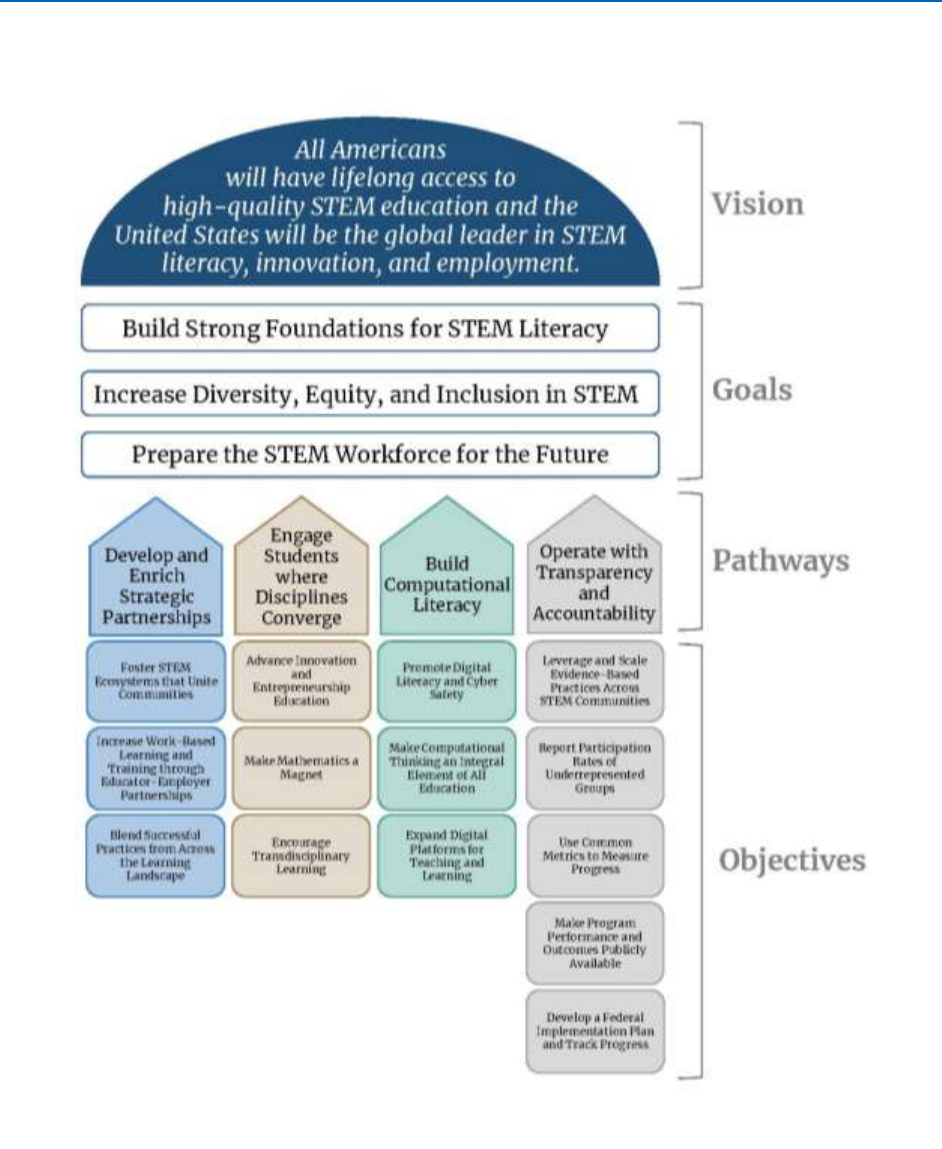
2021 PROGRESS REPORT ON THE IMPLEMENTATION OF THE FEDERAL STEM EDUCATION STRATEGIC PLAN
– 2 –
Figure 1. Schematic illustrating the organizational structure of the Federal STEM Education
Strategic Plan released in December 2018. The Strategic Plan’s vision is supported by three
aspirational goals. Four pathways contain objectives to guide efforts by the Federal
government and the wider STEM education community to realize the Strategic Plan’s vision
and goals.

2021 PROGRESS REPORT ON THE IMPLEMENTATION OF THE FEDERAL STEM EDUCATION STRATEGIC
PLAN
– 3 –
The Strategic Plan is further organized around four pathways, representing a cross-cutting set of
approaches to improve STEM education that will help fulfill its vision and achieve its three goals:
Develop and Enrich Strategic Partnerships – Strengthen relationships between educational
institutions, industry, and community organizations to leverage resources for the purpose of
providing the student with meaningful learning opportunities.
Engage Students where Disciplines Converge – Draw on knowledge and methods across
disciplines to solve complex, real-world problems in STEM using innovation, creativity, and
initiative.
Build Computational Literacy – Design integrated approaches to teaching and learning
computational thinking and promote the expansion of digital platform use.
Operate with Transparency and Accountability – Develop and apply metrics that assess
implementation progress in meaningful ways.
Federal Implementation Efforts: June 2020 to February 2021
CoSTEM is the highest-level interagency body in the Federal government devoted to STEM education. It
oversees coordination of STEM education programs across government and, every five years, creates a
strategic plan. The Federal Coordination in STEM Education Subcommittee (FC-STEM) oversees the
implementation of the Federal STEM Education Strategic Plan and advises CoSTEM and the OSTP
Director on the development and progress of the collaborative work in STEM education across the
Federal science agencies.
In FY 2019, CoSTEM developed an implementation structure (four interconnected interagency working
groups) to support work toward the goals and objectives of the Strategic Plan. The IWGs are organized
by the Strategic Plan’s four pathways. A fifth IWG, the Interagency Working Group on Inclusion in STEM
(IWGIS), was chartered by the NSTC in response to Section 308 of the American Innovation and
Competitiveness Act
3
.
A sixth IWG was formed in 2020 in response to the Supporting Veterans in STEM
Careers Act
4
. FC-STEM facilitates the work of all six IWGs.
The interagency collaboration of FC-STEM empowers agencies to improve STEM education by sharing
best practices, leveraging the expertise and resources of Federal partners, and coordinating activities
in support of common educational goals. FC-STEM agencies are also working together to maximize the
impact of their efforts within the broader STEM education community.
Interagency Working Groups (IWGs)
This report captures activities carried out by the IWGs from June 2020 to February 2021. Four of the
IWGs— Computational Literacy, Convergence, Strategic Partnerships, and Transparency &
Accountability— concentrate their efforts on one of each of the four pathways outlined in the Strategic
Plan. A fifth IWG, the Interagency Working Group on Inclusion in STEM (IWGIS) supports the goal of
increasing diversity, equity and inclusion in STEM. The sixth IWG on Veterans and Military Spouses in
STEM, supports the representation and equity of veterans and military spouses in STEM fields and
careers.
3
S.3084 - 114th Congress (2015-2016): American Innovation and Competitiveness Act | Congress.gov | Library of Congress
4
S.153 - 116th Congress (2019-2020): Supporting Veterans in STEM Careers Act | Congress.gov | Library of Congress

2021 PROGRESS REPORT ON THE IMPLEMENTATION OF THE FEDERAL STEM EDUCATION STRATEGIC PLAN
– 4 –
The six interagency working groups coordinate to ensure they produce complementary efforts that
further the goals and objectives of the Strategic Plan. The sections that follow provide an overview of
the foci for each IWG, highlight some of the actions that agencies are taking that support the work of
the IWG, and provide an overview of the work that the IWGs have prioritized to pursue collaboratively.
Develop and Enrich Strategic Partnerships (Strategic Partnerships IWG)
Participating Agencies: DOC, DOD, DOE, DHS, DOI, ED, NASA, NSF, OSTP, and SI
Description: Partnerships among Federal agencies, educational institutions, employers, museums,
and other community organizations leverage resources and expertise across STEM education
ecosystems to maximize the impact of educational efforts. These connections broaden and enhance
the education of today’s learners by providing authentic STEM experiences, seamless career and
educational transitions, and opportunities for diverse mentorship.
Investment: From the Federal STEM Inventory, 129 programs with a total FY 2020 investment of $2.25
billion directly or indirectly supported the Strategic Partnerships Pathway under the Federal STEM
Education Strategic Plan. These investments are found in CNCS, DHS, DOC, DOD, DOE, DOL, DOT, ED,
EPA, HHS, NASA, NSF, SI, USDA, and VA.
Actions Taken Toward Implementation:
To advance strategic partnership objectives, the Strategic Partnerships IWG engaged with stakeholders
internal and external to the Federal government through a series of data calls and Requests for
Information (RFIs), to learn and encourage adoption of partnership and ecosystem
5
approaches.
Through these efforts, the IWG learned of over 100 new or updated partnerships amongst the Federal
agencies in FY 2020.
The IWG included questions on a FC-STEM data call to learn about agencies’ anticipated use of the IWG’s
STEM education ecosystem definition, finalized in FY 2019, and agencies’ current use of work-based
learning (WBL) models. Twelve agencies reported that they plan to use the STEM education ecosystem
definition in the next 2 years, and 82 FY 2020 WBL programs were reported. The majority of these WBL
programs support undergraduate and graduate students, but high school, teacher and veterans’
programs were also identified.
The IWG also contributed questions to a public RFI led by FC-STEM. Analysis of the responses led to
important insights around the direction of the IWG’s future work. The responses to questions related to
STEM education ecosystems highlighted the need for more information on consistent measures,
structures, and membership. Employers and industry were cited as key partners, emphasizing the
importance of work-relevant partners. The responses to questions related to work-based learning
revealed models of and barriers to work-based learning that the IWG had not previously considered,
especially for high school programs.
5
Federal definition for STEM Education Ecosystems: STEM education ecosystems consist of multi-sector partners united by a
collective vision of supporting participation in STEM through the creation of accessible, inclusive STEM learning
opportunities spanning all education stages and career pathways. A STEM education ecosystem continuously evaluates its
activities and adapts as needed, plans for the long-term, and communicates its work to build broad support and advance
best-practices. (2020 Progress Report on the Implementation of the Federal STEM Education Strategic Plan (archives.gov))

2021 PROGRESS REPORT ON THE IMPLEMENTATION OF THE FEDERAL STEM EDUCATION STRATEGIC PLAN
– 5 –
The IWG enhanced public knowledge of Federal internship opportunities and promoted the formation
of new partnerships through two public webinars. These webinars were conducted in partnership with
the NSF INCLUDES National Network, thereby tapping into an existing STEM education ecosystem.
Finally, the IWG defined standards for robust WBL programs and completed an initial assessment of
models for expanding opportunities across agencies. This included programs that provide WBL in
Federal contracts and private sector awards.
Engage Students where Disciplines Converge (Convergence IWG)
Participating Agencies: DOC, DOD, DOE, ED, NASA, NSF, OSTP, and SI
Description: When incorporated into STEM teaching, learning, and assessment, real world STEM
challenges engage students by drawing on knowledge and methods from across disciplines by
promoting initiative and creativity. To encourage transdisciplinary learning, the IWG established a plan
to review existing efforts to: (1) support STEM educators and students through upskilling, resourcing,
and providing a forum to share best practices; (2) support the dissemination of effective
transdisciplinary STEM education practices and programs to attract a more diverse and inclusive
community of participants; and (3) expand support for STEM learners to study transdisciplinary
problems through internships, fellowships, scholarships, and other experiential learning opportunities.
Investment: From the Federal STEM Inventory, 128 programs with a total FY 2020 investment of $2.67
billion directly or indirectly supported the Convergence Pathway under the Federal STEM Education
Strategic Plan. These investments are found in CNCS, DHS, DOC, DOD, DOE, DOI, DOT, ED, EPA, HHS,
NASA, NSF, SI, USDA, and VA.
Actions Taken Toward Implementation:
The Convergence IWG conducted a substantive literature review on convergence education in the K-20
space towards the development of a convergence education definition. This literature review also
established a basis of reference for further understanding transdisciplinary (TD) learning in STEM
education.
Research suggests that, while much work has been done to promote and advance convergence
education over the past decade, a distinct and common framework is beneficial to the concept of
convergence being adopted and universally recognized. Therefore, the Convergence IWG efforts were
subsequently centered around developing, refining, and promoting a flexible and adaptable “Pathways
to Convergence” framework that can be leveraged by educators, stakeholders, and federal agencies.
While still under development, the framework will emphasize the need for input from both Federal
agencies and external stakeholders and is designed to be iterative and to evolve over time.
The IWG also hosted a series of educator roundtables which helped establish a preliminary
understanding of “convergence,” “transdisciplinary learning and teaching,” and “integrated STEM,”
and how they are communicated, leveraged, and understood in various educator spaces. These initial
conversations with educators across the K-20 spectrum offered a preview of information to be collected
more broadly in the public RFI. Together, information from the educator roundtables and public RFI
contributed to the realization of the challenges and feasibility in implementing evidence-based
convergence education.

2021 PROGRESS REPORT ON THE IMPLEMENTATION OF THE FEDERAL STEM EDUCATION STRATEGIC PLAN
– 6 –
Solicitations for model programs and best practices in TD learning and education from Federal agencies
brought to light programs that are exemplary. Most Federal agencies indicated that work-based
experiences are an area where TD programming is most feasible.
Build Computational Literacy (Computational Literacy IWG)
Participating Agencies: DOC, DOD, ED, NITRD, NSF, OSTP, SI, and USDA
Description: Federal agencies are well-positioned to help Americans of all ages and backgrounds
harness the benefits of digital technology and be critical and ethical participants in the digital economy.
By developing integrated approaches to teaching and learning computational thinking and supporting
new digital technology-based learning environments, agencies can advance mission-critical goals like
promoting cyber safety and encouraging responsible data management. In addition, Federal agencies
are creating internships and job opportunities for students with computational skills. For example,
NOAA hired more than 75 students with strong computational skills through the Pathways program.
Investment: From the Federal STEM Inventory, 119 programs with a total FY 2020 investment of $2.32
billion directly or indirectly supported the Computational Literacy Pathway under the Federal STEM
Education Strategic Plan. These investments are found in CNCS, DHS, DOC, DOD, DOE, DOI, DOL, DOT,
ED, EPA, HHS, NASA, NSF, SI, USDA, and VA.
Actions Taken Toward Implementation:
The Computational Literacy IWG continued to execute towards its objectives that encourage the use of
a common definition of computational literacy, support dissemination of promising content and
practices that promote computational literacy and expand digital platform use. The CL IWG utilized the
FC-STEM Request for Information (RFI) to advance efforts across its core objectives, including four
questions specific to the CL IWG, for which there were more than 100 respondents. In reviewing the full
set of responses, there were many other inputs relevant to CL activities. The CL IWG is using the RFI
responses as input to its Federal agency definition of computational literacy. The definition will help
provide a means for common metrics and clarity to enable accurate reporting of Federal Agency
actions.
The IWG also developed strategic objectives for measuring progress, including developing consensus
among Federal agencies on an operational definition of computational literacy; curating and
disseminating fundamental and applied research on promising content and practices to promote
computational literacy and effective uses of digital platforms, tools, and methods for teaching
computational literacy; and expand research on and support for development of curricula using digital
tools and universal design principles.
FC-STEM agencies also worked alongside the country’s education community to promote digital
literacy and cyber safety. In November 2020, NSF released a call for proposals to its Data Science Corps
program with plans to award up to $12 million dollars. The program promotes data literacy and
provides training in data science to the existing workforce. NIH is preparing the next generation of
researchers by incorporating computational skills and the principles of responsible data use into all of
its programs for undergraduate and graduate students. ED held several webinars that align with the CL
objectives to include integrating emerging technologies into teaching practice and online and hybrid
teaching. ED, in collaboration with NSF and the National Security Council, opened nominations for the
second annual Presidential Cybersecurity Education Award. The DOC National Initiative for

2021 PROGRESS REPORT ON THE IMPLEMENTATION OF THE FEDERAL STEM EDUCATION STRATEGIC PLAN
– 7 –
Cybersecurity Education Program, led by NIST, included a focus on digital citizenship, digital literacy,
and CL in its new National Strategic Plan to build the nation’s cybersecurity workforce. Across the
Department, DoD supported a number of CL related programs and activities for K-12, undergraduate
and graduate students. DOD continued to collaborate with DHS and others to promote and facilitate
cyber education for teachers and students of military families.
Operate with Transparency and Accountability (Transparency and Accountability IWG)
Participating Agencies: DOC, DOD, DOE, ED, HHS, NASA, NSF, OMB, OSTP, and USDA
Description: Across the Federal STEM education enterprise, agencies are working to: develop and apply
metrics that assess progress in meaningful ways; identify and scale evidence-based practices; collect
data on educational programs, such as performance evaluations, program outcomes, and participation
rates for underrepresented groups; and disseminate information to external stakeholders. The
complexity of Federal investments in STEM education dictates the multiplicity of approaches that are
being pursued to implement the Strategic Plan, and it is an essential consideration for the interagency
development of metrics, operational definitions of terms, and best practices. This complexity requires
creative and flexible approaches that focus on key points of intersection between programs to help
establish and enhance returns on these investments. Developing common metrics may also require
consideration of available resources with the understanding that budgets vary widely across the
inventory of Federal STEM education programs.
Actions Taken Toward Implementation:
The America COMPETES Reauthorization Act of 2010 calls on CoSTEM to document “rates of
participation by women, underrepresented minorities, and persons in rural areas” in its federally
sponsored STEM education programs and activities. To help agencies with this reporting requirement,
the Transparency and Accountability Interagency Working Group (T&A IWG) developed a set of
guidelines for defining “participants” and for designating persons in rural areas. In order to determine
the feasibility and utility of the recommended participant reporting guidelines, the T&A IWG conducted
a pilot with a small number of FC-STEM agency investments using a survey instrument. The goals of the
pilot were to: (1) test and, if necessary, refine guidelines for agency-level decisions regarding
participation rate reporting; and (2) provide FC-STEM with information on factors that may impede or
support the adoption of the guidelines.
Investments across agencies were nominated for inclusion in the pilot and 19 investments across 10
agencies were selected for inclusion in the pilot. The 19 investments were selected to represent a range
of STEM programs and activities supported by FC-STEM agencies, including small to large budget
investments, different population targets (e.g., students, teachers, institutions), and different focus
areas (e.g., training, scholarships, informal learning, K-12, postsecondary). Agency program
representatives were asked to provide: (1) an overview of the program/activity/investment; (2)
feedback on proposed participant guidelines; (3) feedback on proposed guidelines for designating
“persons in rural areas”, and (4) participant data.
Based on the survey responses, the T&A IWG concluded it was not necessary to refine its original
recommendations or proposed guidelines for participant reporting. Accordingly, some of the T&A IWG
recommendations continue to be that: participants be classified into specified “participant types” for
reporting purposes; “rural areas” be defined using OMB’s Core-based Statistical Areas (CBSA); agencies

2021 PROGRESS REPORT ON THE IMPLEMENTATION OF THE FEDERAL STEM EDUCATION STRATEGIC PLAN
– 8 –
internally collect and organize their geographic data by zip code, or alternatively by county or by street
address (bearing in mind that agencies using zip code or street address as geographic identifiers will
need to be able to translate that raw data into county data and the CBSA designation in their data
systems); and FC-STEM adopt the recommended guidelines for agencies’ use in determining the STEM
education programs and activities subject to participant reporting.
Diversity, Equity, and Inclusion in STEM (IWG on Inclusion in STEM)
Participating Agencies: DOC, DOD, DOE, DHS, DOI, DOS, DOT, ED, EPA, HHS, NSF, NASA, OSTP, SI, and
USDA
Description: Increasing diversity, equity, and inclusion in STEM is one of the Strategic Plan’s three
central goals. When an organization’s workforce is diverse in terms of gender, race, socioeconomic
status, ethnicity, physical ability, geography, etc., and provides an inclusive environment that values
diversity and promotes equitable opportunities, the organization better retains talent and is more
innovative and productive. Increasing equity and inclusion are fundamental prerequisites for making
high-quality STEM education accessible to all Americans and will maximize the creative capacity of
tomorrow’s workforce.
Investment: From the Federal STEM Inventory, 165 programs with a total FY 2020 investment of $3.33
billion directly or indirectly supporting the Diversity, Equity and Inclusion Goal under the Federal STEM
Education Strategic Plan. These investments are found in CNCS, DHS, DOC, DOD, DOE, DOL, DOT, ED,
EPA, HHS, NASA, NRC, NSF, SI, USDA, and VA.
Actions Taken Toward Implementation:
Efforts toward inclusion in STEM across FC-STEM agencies are coordinated by the IWGIS. For this
reporting period, IWGIS carried out work in three priority areas.
First, the IWGIS worked to develop and share a resource for outlining best practices for diversity and
inclusion across Federal agencies. Following up on work defining best practices, promising practices,
emerging practices, underserved, and underrepresented, IWGIS completed a literature search for best
practices in diversity and inclusion and compiled information from an FC-STEM data call highlighting
successful practices in federal agencies. The committee organized the findings and completed a draft
of the best practices report by February 2021.
Second, the IWGIS is charged with working collaboratively with the other IWGs as they work toward
their goals. IWGIS and TA IWG formed a joint committee to work on a literature review on barriers to
inclusion in STEM and common metrics for Federal STEM programs. The review on barriers to
inclusion in STEM is being reviewed and will be an addition to a summary document of best practices
in inclusion in STEM document. IWGIS and SP IWG are working jointly on internship, fellowship, and
other work-based learning programs. This joint committee’s ongoing work will support best practices
that eliminate barriers for inclusion in work-based learning programs, including those in the
application process and on-site harassment.
Third, one of the IWG’s overarching goals is to increase the diversity of the Federal STEM workforce.
Toward that goal, the IWG completed an analysis of the diversity of the current Federal STEM
workforce using 2019 FedScope data. This will be the baseline for progress measured under this plan.

2021 PROGRESS REPORT ON THE IMPLEMENTATION OF THE FEDERAL STEM EDUCATION STRATEGIC PLAN
– 9 –
The IWGIS also worked with the Hiring Authorities Tiger Team to propose new hiring authorities that
target diversity. Recommendations were presented to FC-STEM in fall 2020.
Veterans and Military Spouses in STEM (IWG on Veterans and Military Spouses in STEM)
Participating Agencies: DOD, ED, EPA, NSF, NASA, OSTP, OMB, and VA
Description: Develop and implement a plan to better enable military spouses and veterans to be fully
engaged in a mobile, highly technical, and malleable STEM workforce designed to advance our Nation’s
global leadership and economic development by increasing the representation and equity of veterans
and military spouses in STEM occupations and careers through targeted government programs that
support access to STEM educational pathways and the development of skillsets portable across
geographic regions.
Actions Taken Toward Implementation:
In February 2020, the Supporting Veterans in STEM Careers Act was signed, seeking to improve
representation and equity of veterans and military spouses in STEM fields. The Act directed OSTP to
develop and facilitate the development and implementation of a strategic plan to support veterans,
service members, and military spouses in STEM education and careers by establishing an Interagency
Working Group (IWG) to coordinate efforts across the Federal government.
The Supporting Veterans in STEM Careers Act specifies that the strategic plan should: Identify barriers
veterans face in reentering the workforce; Identify barriers military spouses face in establishing careers
in STEM fields; Specify short- and long-term objectives; Describe the approaches that each participating
agency will take; Specify common metrics that will be used by Federal agencies to measure progress
toward objectives; and Identify barriers requiring Federal or State legislative or regulatory changes.
A multi-agency working group was formed meeting almost monthly to create a new strategic plan. The
IWG intends for their work to address points of intersection between STEM education and barriers to
growing the domestic STEM workforce, as well as changing conditions that could positively influence
the employment of veterans and military spouses. The strategy should aim to identify overarching goals
and specific actions the Federal government can take to help address barriers that Veterans,
transitioning service members, and military spouses experience pursuing STEM education and careers,
and to propose workforce investments that fuel expansion of science and engineering to maintain
global leadership in research and development. The report should be released in 2021.

2021 PROGRESS REPORT ON THE IMPLEMENTATION OF THE FEDERAL STEM EDUCATION STRATEGIC PLAN
– 10 –
Efforts Outside of the Interagency Working Groups
Public Engagement
On August 3, 2020, the Excellence Awards in Science and Engineering (EASE) program honored 107
recipients with the Presidential Awards for Excellence in Mathematics and Science Teaching (PAEMST)
and 15 recipients with the Presidential Awards for Excellence in Science, Mathematics, and Engineering
Mentoring (PAESMEM). NSF manages the EASE program on behalf of OSTP. The COVID-19 pandemic did
not allow for a face-to-face recognition event, which limited agency interaction with the awardees.
Federal science agencies from across government taped short videos congratulating the awardees,
which were combined to create a video montage of agency representatives speaking to the awardees.
In September 2020, OSTP and NSF, on behalf of CoSTEM, released a public RFI containing 24 questions
related to the Federal STEM Education Strategic Plan and changes in education systems that have been
impacted by the COVID-19 pandemic. One hundred fifteen total responses were submitted and
included responses from teachers, university faculty and administrators, state governments, and non-
profit organizations, among others. While the individual responses varied, there were several
overarching themes including: The digital divide became very apparent and important in a post-COVID
education and that digital divide includes access to Internet, technology, and technological support;
Student engagement is a huge, unresolved issue (present pre-COVID, exacerbated post-COVID); and
There is a great deal of concern about how to mitigate these issues. In general, many responses also
suggested the Federal government:
• Boost STEM literacy initiatives: Increased introductory and applied computational and data
science training is needed for undergraduate and graduate level students to boost STEM
literacy.
• Increase funding for STEM Education: Federal investment in STEM Education should support
funding for apprenticeships and development programs, and should engage State and local
governments.
• Push to make STEM more inclusive: Focused mentorship, bias training in hiring, and workforce
cultural changes can improve representation of women and underrepresented racial and ethnic
groups within the STEM workforce.
• Broaden the definition of STEM: To be inclusive of the behavioral and cognitive sciences.
In addition to individual and non-profit responses from across the United States, several State-level
education offices submitted official responses to the RFI, including the Virginia STEM Education
Commission, the Minnesota Department of Education, and the STEM unit of the Elementary and
Secondary Education division of the Arkansas Department of Education. Among other information,
states provided a list of future opportunities for improving the quality of STEM education, plans and
activities for increasing computational literacy, and information on State-level activities in response to
COVID-19 challenges as well as public private partnerships. The full RFI responses are available online
6
.
Outreach and Dissemination Efforts
The COVID-19 Pandemic caused a myriad of challenges for the Nation. The STEM Education and
Workforce community experienced shifts in the ways in which learning and working occurred in the
recent year. Federal agencies also shifted - in the ways their STEM programs were offered and in some
of the ways they engaged with the public. In 2020, nearly all of the Federal government entities shifted
6
https://www.nsf.gov/ehr/Materials/STEMEDRFIResponses.pdf

2021 PROGRESS REPORT ON THE IMPLEMENTATION OF THE FEDERAL STEM EDUCATION STRATEGIC PLAN
– 11 –
their in-person programs to the virtual format. While at least ten programs were cancelled or
postponed, most other programs were adapted for virtual delivery in 12 different ways, including virtual
field trips, online labs, and virtual internships and mentoring.
The NOAA Office of Education Higher Education Programs transitioned their internships to a virtual
format while their facilities were closed due to the pandemic. In particular, scholars from the Ernest F.
Hollings Undergraduate Scholarship and José E. Serrano Educational Partnership Program with
Minority Serving Institutions Undergraduate Scholars Program were able to conduct NOAA-mission
research, network, and learn new skills while remaining safe. The 10-week summer program, originally
planned as an in-person engagement, continued with 180 employees serving as mentors and research
leads for the students.
The shift to virtual formats provided opportunities for Federal agencies to use virtual resources to reach
a greater number of program participants with the removal of constraints such as room size and travel
cost. Without access to the National Zoo, the Smithsonian Institute offered a webinar series, the Wild
Side of STEAM, in 2020. The webinars are open to individuals and groups of all sizes which allows the
Zoo to increase the scale of their engagement.
In addition to adapting their programs, agencies employed a variety of strategies to disseminate
resources, programmatic updates, and communicate with the public. Common strategies included
creating online downloadable materials, e.g. labs, and lesson plans, posting videos for online STEM
teaching and learning, enabling students to deliver poster and oral presentations online, and
information about STEM careers and educational pathways.
The use of websites was common to reach participants. The Department of Defense experienced a 97%
increase in users, a 65% increase in page views and a 108% increase in the number of sessions for their
DoD STEM website (dodstem.us). The site is an online environment that provides visitors with
information about DoD career and educational opportunities, resources for teachers, and DIY activities
for adults and children. The site includes information and resources about topics ranging from health
and medicine (e.g. DNS), science (e.g. electromagnetic waves), and technology (e.g. robotics).
The Environmental Protection Agency Community Engagement Program, Research Triangle Park (RTP)
Speakers Bureau provides a way for more than 200 EPA RTP employees to communicate EPA science to
the public including over 2,100 K-12 students and educators on the EPA’s RTP campus as well as at local
school, community, and national events. The shift to virtual engagements provided the EPA experts
across the country an opportunity to continue participating in educational programming independent
of location.
The NASA Kids Club website received over half-million page views in mid-March 2020 eventually
experiencing a 316% increase compared to the prior month. As the pandemic continued, page views
for FY2020 Q3 and Q4 experienced a 57% increase from their viewership in FY2019. By June 2020, nearly
300 media outlets had highlighted NASA STEM resources that were created and disseminated online.
The increased attention yielded increased page views. For example, the NASA Science Mission
Directorate’s (SMD) “Get Involved” page experienced a 770% increase in page views, the NASA Citizen
Science site experienced a 358% increase in page views, and SMD awardee WGBH experienced a 700%
increase in downloadable materials. In total, 193 new products were added during FY2020 Q3 and Q4.

2021 PROGRESS REPORT ON THE IMPLEMENTATION OF THE FEDERAL STEM EDUCATION STRATEGIC PLAN
– 12 –
Public-Private Partnerships
Partnerships between public and private entities provide opportunities to invest in and support STEM
education programs and initiatives. Leveraging the best that each partner contributes allows for STEM
education and workforce projects to be effective in supporting the Nation’s current and future
workforce. Federal agencies engage in individual partnerships that enable non-Federal resources to
augment federal investments. Across the Federal government, agencies engaged in partnerships with
entities most often with academic sector as well as those in the private sector, State or local
governments, non-profit organizations and other Federal agencies.
In FY2020, nine agencies established new partnerships including DoD, DoT, EPA, NASA, ED, USPTO, NIH,
VA, and SI. In support of on-going efforts, agencies including, DOD, DoT, EPA, NASA, NOAA, NSF, SI, and
USPTO also renewed or expanded exiting partnerships in FY2020. To document the partnerships, a
variety of mechanisms was used with MOU/MOAs, Grants, and Informal Agreements most commonly
utilized.
The Department of Defense established the OnRamp II program in FY2020 using an educational
partnership agreement with four institutions, North Carolina Agricultural & Technical State University,
University of Maryland Baltimore County, University of Texas- San Antonio, and the Collaboration for
Advancing Minority Participation in Security which includes Texas Agricultural & Mechanical University,
Prairie View Agricultural & Mechanical University, Texas Agricultural & Mechanical State University-
Corpus Christi, Texas Agricultural & Mechanical State University-San Antonio, and West Texas
Agricultural & Mechanical State University. This partnership promotes the technical health of a diverse
STEM pipeline for NSA and offers scholarships to students in return for internships, service with the NSA,
and mission-focused research opportunities.
The Rural Tech Project, a $600,000 challenge to advance technology education in rural high schools was
started in FY2020. Recognizing that today’s high school students need advanced technology skills and
that one-third of American schools are in rural areas, the Department of Education has established this
challenge and will provide rural schools with opportunities to design programs based on what they
know will work best for their students. Four finalist teams are in phase 2 of the project when they plan,
execute, revise, and report on their programs. The project is expected to conclude in fall 2023.
In partnership with a private-sector organization, Dreams Soar, the Federal Aviation Administration
(Department of Transportation), created a female Aviation STEM Ambassador for the FAA. The
ambassador will be a role model for young women and girls who want to pursue aviation and STEM
careers. The partnership allows the FAA to leverage Dreams Soar’s platform and deliver resources of
female empowerments through aviation at a scale beyond what the FAA could do on its own.
To improve the employment opportunities for Veterans, the VA established the VET TEC Employer
Consortium in FY2020. The goal of the consortium is to accelerate the hiring of VET TEC students who
complete a tech-focused program of study. The Consortium connects students to employers with
hiring opportunities and offers career resources to assist them with their vocational goals signed 12
memoranda of agreements with industry employers.
In 2020, NASA established a partnership with Discovery Education to expand digital access to STEM
resources and opportunities. Collaborative programming included interactions with NASA scientists
and engineers and development of playlists that leverage high-profile missions to teach classroom
topics.

2021 PROGRESS REPORT ON THE IMPLEMENTATION OF THE FEDERAL STEM EDUCATION STRATEGIC PLAN
– 13 –
Agencies used agreement mechanisms including, memoranda of understanding (MOUs), cooperative
agreements, grants, gifts, inter-agency agreements, contracts, informal agreements, and educational
partnerships.
STEM Education Advisory Panel
The role of the STEM Education Advisory Panel is to provide advice and recommendations to CoSTEM,
assess CoSTEM’s progress in carrying out responsibilities related to the America COMPETES
Reauthorization Act, and help identify need or opportunity to update the Federal STEM Education
Strategic Plan. Members met in December 2020 to assess CoSTEM’s progress in fulfilling the Strategic
Plan. At the December 2020 meeting, after receiving updates from FC-STEM and IWG representatives,
panel members discussed whether there was evidence of action in meeting the COMPETES Act
requirements and if there was evidence of action towards the pathways and objectives of the Strategic
Plan. Members of the public can find more information about the meeting and its minutes on the panel
website
7
.
Closing Summary
STEM priorities as detailed in the 2018 Federal STEM Education Strategic Plan were released following
a White House State-Federal STEM Education Summit held earlier in the year.
8
The central objective of
the strategic plan is to ensure lifelong access to high-quality STEM education for all Americans and to
position the U.S. as the global leader in STEM literacy, innovation, and employment. To achieve this
objective, the strategy identifies three overarching goals: build strong foundations for STEM literacy;
increase diversity, equity and inclusion in STEM; and prepare the STEM workforce for the future.
Supporting these goals are four pathways: develop and enrich strategic partnerships; engage students
where disciplines converge; build computational literacy; and operate with transparency and
accountability. These pathways are further supported by 3-5 objectives for improving STEM education
and assessing this improvement. Progress reports released in 2019
9
and 2020
10
summarize efforts made
to achieve the strategic objective, including an inventory of Federal programs, their budgets and their
alignment with the goals and pathways. This annual progress report captures activities up until
February 2021 with the exception of the information in the Appendix. Information collected after
February 2021 was necessary to ensure the report fulfills American COMPETES Reauthorization Act
11
requirements. As such, the appendix also begins to reflect the priorities of a new Administration.
7
https://nsf.gov/ehr/STEMEdAdvisory.jsp
8
https://trumpwhitehouse.archives.gov/wp-content/uploads/2018/06/Summary-of-the-2018-White-House-State-Federal-
STEM-Education-Summit.pdf
9
https://trumpwhitehouse.archives.gov/wp-content/uploads/2019/10/Progress-Report-on-the-Federal Implementation-of-
the-STEM-Education-Strategic-Plan.pdf
10
https://trumpwhitehouse.archives.gov/wp-content/uploads/2017/12/Progress-Report-Federal- Implementation-STEM-
Education-Strategic-Plan-Dec-2020.pdf
11
PUBL358.PS (congress.gov)
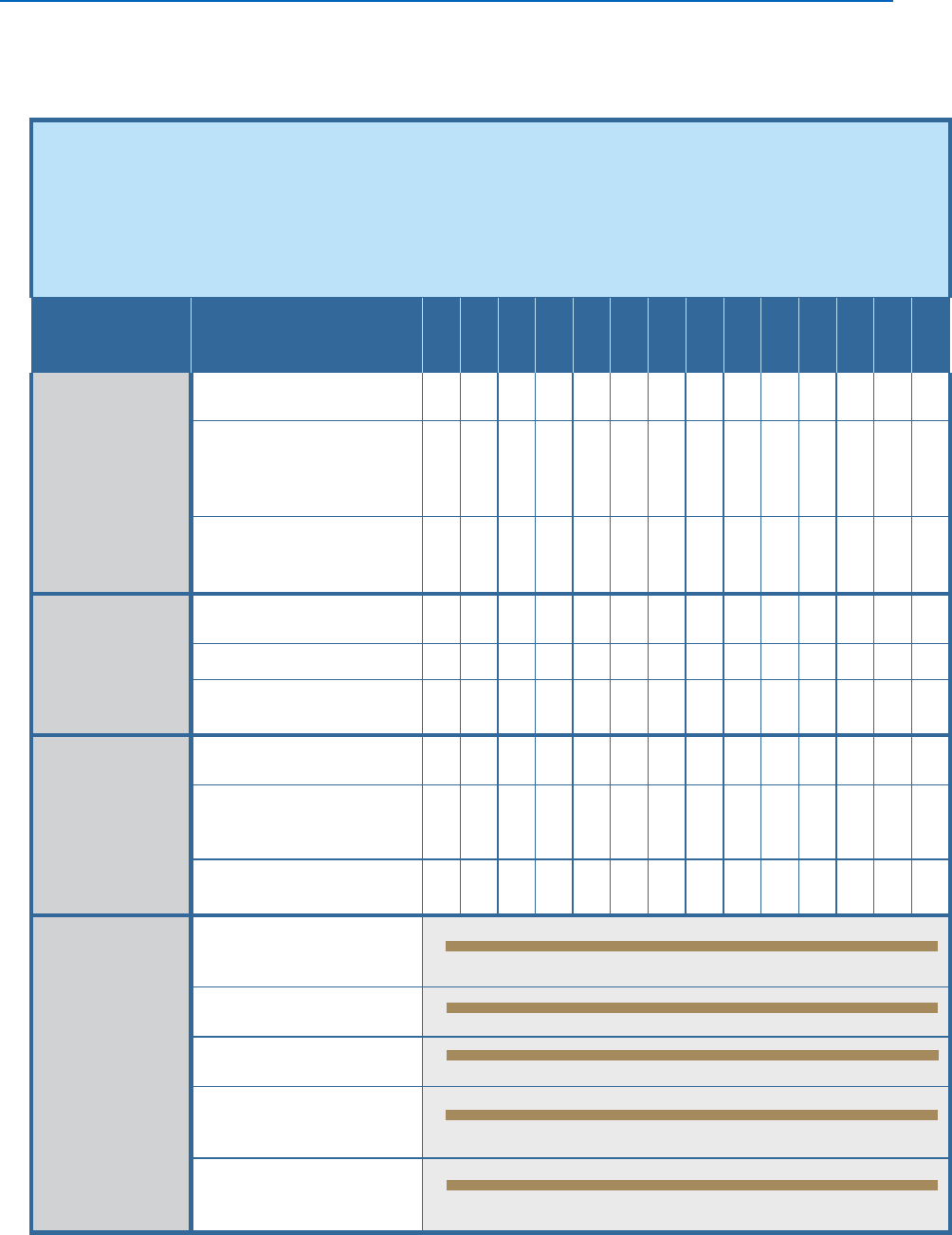
2021 PROGRESS REPORT ON THE IMPLEMENTATION OF THE FEDERAL STEM EDUCATION STRATEGIC PLAN
– 14 –
Appendix 1. Agency STEM Education Implementation Actions Alignment to Pathways
and Objectives (Version: 12.04.2018)
GOALS FOR AMERICAN STEM EDUCATION
*
Build Strong Foundations for STEM Literacy
*
*
Increase Diversity, Equity, and Inclusion in STEM
*
*
Prepare the STEM Workforce for the Future
*
Pathways
Objectives
DOC
DOD
DOE
DOI
DOL
DOS
DOT
ED
EPA
HHS
NASA
NSF
SI
USDA
Develop and
Enrich
Strategic
Partnerships
Foster STEM Ecosystems that
Unite Communities
Increase Work-Based
Learning and Training
through Educator-Employer
Partnerships
Blend Successful Practices
from Across the Learning
Landscape
Engage
Students
where
Disciplines
Converge
Advance Innovation and
Entrepreneurship Education
Make Mathematics a Magnet
Encourage Transdisciplinary
Learning
Build
Computational
Literacy
Promote Digital Literacy and
Cyber Safety
Make Computational
Thinking an Integral Element
of All Education
Expand Digital Platforms for
Teaching and Learning
Operate with
Transparency
and
Accountability
Leverage and Scale Evidence-
Based Practices Across STEM
Communities
Report Participation Rates of
Underrepresented Groups
Use Common Metrics to
Measure Progress
Make Program Performance
and Outcomes Publicly
Available
Develop a Federal
Implementation Plan and
Track Progress

2021 PROGRESS REPORT ON THE IMPLEMENTATION OF THE FEDERAL STEM EDUCATION STRATEGIC PLAN
– 15 –
Appendix 2. Definition of a STEM Education Investment (Version: 03.06.2019)
STEM: For the purposes of this inventory, STEM includes physical and natural sciences, technology,
engineering, mathematics, and computer science disciplines, topics, or issues (including
environmental science, environmental stewardship, and cybersecurity). We recognize that various
different and usually broader definitions are used for “STEM.” This relatively narrow definition has
been chosen to constrain the focus of the inventory to specific areas that have similar educational
contexts, issues, and challenges, in order to maximize the inventory’s usefulness in characterizing and
improving the effectiveness of the Federal spending intended to address this particular set of
educational contexts, issues, and challenges.
Investment (the unit of analysis in the detailed survey): A funded STEM education activity that has
a dedicated budget of more than $300,000 in FY 2018 and staff to manage the budget. This budget
may be part of a budget for a larger program. Federal salaries and expenses and activities that are
one-time or irregular expenditure of overhead funds are excluded.
STEM Education: Formal or informal (in school or out) education that is primarily focused on STEM
disciplines, topics, or issues, as defined above. All the investments included in this STEM education
inventory have one of the following as a primary objective:
• Learning: Develop STEM skills, practices, or knowledge of students or the public.
• Engagement: Increase learners’ interest in STEM, their perception of its value to their lives, and/or
their ability to participate in STEM.
• Pre- and In-Service Educator/Education Leader Performance: Train or retain STEM educators (K-
12 pre-service or in-service, postsecondary, and informal) and education leaders to improve their
content knowledge and pedagogical skills.
• Postsecondary STEM Degrees: Increase the number of students who enroll in STEM majors,
complete STEM credentials or degree programs, or are prepared to enter STEM careers or advanced
education.
• STEM Careers: Prepare people to enter into or advance in the STEM workforce with training or
certification (where STEM discipline specific knowledge and skill are the primary focus of the
education investment).
• STEM System Reform: Improve STEM education through a focus on education system reform.
• Institutional Capacity: Support advancement and development of STEM personnel, programs, and
infrastructure in educational institutions such as universities, informal education institutions, state
education agencies, and local education agencies.
• Education Research and Development: Develop evidence-based STEM education models and
practices.
For the purposes of this inventory, activities that have the following primary objectives are not
considered to be a STEM education investment:
• Providing post-doctoral research fellowships/scholarships.
• Focusing on subjects other than STEM subjects or including STEM subjects as one of many possible
focal subjects (more than two other non-STEM areas).*
• Focusing on broad education system reform that encompasses far more than STEM education.
• Supporting one-time or ad hoc STEM education investments.

2021 PROGRESS REPORT ON THE IMPLEMENTATION OF THE FEDERAL STEM EDUCATION STRATEGIC PLAN
– 16 –
• Engaging in volunteer activities by Federal employees (e.g. judging STEM competitions, visiting
classrooms).
• Providing outreach for education (raising awareness of education programs) or communication
about an agency and its activities.
• Distributing STEM education products that are no longer part of a funded education investment.
• Supporting knowledge, interest, or skills not specific to STEM disciplines.
* The Department of Education is excluded from this provision, in order to include the Department of
Education’s contributions to the federal STEM education portfolio that are funded via investments
that may support education in STEM and non-STEM subject areas.

2021 PROGRESS REPORT ON THE IMPLEMENTATION OF THE FEDERAL STEM EDUCATION STRATEGIC PLAN
– 17 –
Appendix 3. Agency STEM Education Investments (FY2020) Alignment to Goals and
Pathways
The information in the table below shares how each individual agency’s investment aligns with the
goals and pathways identified in the Strategic Plan. This information was collected by FC-STEM. FC-
STEM agencies were asked how investments aligned to the Federal STEM Education Strategic Plan goals
and pathways. A “D” indicates that the major outcome of the STEM investment contributes directly to,
or progress towards the attainment of the goal or pathway. An “I” indicates that the major outcome of
the STEM investment contributes indirectly to the attainment of the goal or pathway, or the investment
outcome supports the goal or pathway or progress towards the goal, but is not a stated goal or objective
of the investment. A blank indicates that the anticipated outcomes of the investment are unlikely to
contribute, directly or indirectly, to achieve the goal or pathway.
Agency
Sub-
Agency/
Office
Program Name
Goal:
Build
strong
foundat
ions for
STEM
literacy
Goal:
Increase
diversity,
equity
and
inclusion
in STEM
Goal:
Prepare
the
STEM
work-
force
for the
future
Path-
way:
Develop
and
enrich
stra-
tegic
partner
ships
Path-
way:
Engage
students
where
discip-
lines
converge
Path-
way:
Build
comput
ational
literacy
CNCS/
AmeriCo
rps
CNCS STEM Programs
D
D
D
I
D
D
DOC
EDA
STEM Talent Challenge
D
D
D
D
I
D
DOC
NIST
STEM Pipeline for the Next
Generation Scientists and
Engineers
D
D
D
D
D
I
DOC
NIST
Summer Middle School
Institute
D
I
D
D
D
D
DOC
NIST
Summer Undergraduate
Research Fellowship
(SURF) Program
D
D
D
DOC
NOAA
Bay Watershed Education
and Training (B-WET)
D
I
I
D
D
DOC
NOAA
Dr. Nancy Foster
Scholarship Program
I
I
I
I
DOC
NOAA
Ernest F. Hollings
Scholarship Program
I
I
D
I
DOC
NOAA
Jose E. Serrano
Educational Partnership
Program with Minority
Serving Institutions
I
D
D
D
D
DOC
NOAA
NOAA Environmental
Literacy Program (ELP)
D
I
I
I
D
I
DOC
NOAA
Margaret A. Davidson
Graduate Fellowship
I
I
D
D
D

2021 PROGRESS REPORT ON THE IMPLEMENTATION OF THE FEDERAL STEM EDUCATION STRATEGIC PLAN
– 18 –
Agency
Sub-
Agency/
Office
Program Name
Goal:
Build
strong
foundat
ions for
STEM
literacy
Goal:
Increase
diversity,
equity
and
inclusion
in STEM
Goal:
Prepare
the
STEM
work-
force
for the
future
Path-
way:
Develop
and
enrich
stra-
tegic
partner
ships
Path-
way:
Engage
students
where
discip-
lines
converge
Path-
way:
Build
comput
ational
literacy
DOC
NOAA
NOAA Teacher at Sea
Program
I
I
I
I
I
DOC
NOAA
Office of Ocean Exploration
Education Programs
D
D
D
D
I
I
DOC
NOAA
Sea Grant
D
I
D
I
D
DOD
AFRL
Air Force STEM/Legacy
Program
D
I
D
I
I
I
DOD
DTRA
Joint Science and
Technology Institute (JSTI)
D
I
I
I
I
I
DOD
MDA
MDA - Inspiring Generations
with New Ideas to
Transform Education
(IGNITE)
I
D
I
D
D
D
DOD
NSA
Centers of Academic
Excellence
D
I
D
D
D
D
DOD
NSA
GenCyber Program
D
D
D
D
D
D
DOD
NSA
NSA Cyber Exercise
D
I
D
I
I
I
DOD
ODASA
(R&T)
Army Educational Outreach
Program (AEOP)
D
D
D
D
D
D
DOD
ONR
Navy - Science and
Engineering Apprenticeship
Program (SEAP)
I
I
I
I
I
DOD
ONR
The Naval Research
Enterprise Intern Program
(NREIP)
I
I
I
I
I
DOD
OUSD
(R&E)
National Defense
Education Program (NDEP)
STEM Education and
Outreach
D
D
D
D
I
I
DOD
OUSD
(R&E)
National Defense
Education Program (NDEP)
Science, Mathematics And
Research for
Transformation (SMART)
I
D
D
D
I
I
DOD
OUSD
(R&E)
National Defense Science
and Engineering Graduate
(NDSEG) Fellowship
Program
I
I
D
I
I
I

2021 PROGRESS REPORT ON THE IMPLEMENTATION OF THE FEDERAL STEM EDUCATION STRATEGIC PLAN
– 19 –
Agency
Sub-
Agency/
Office
Program Name
Goal:
Build
strong
foundat
ions for
STEM
literacy
Goal:
Increase
diversity,
equity
and
inclusion
in STEM
Goal:
Prepare
the
STEM
work-
force
for the
future
Path-
way:
Develop
and
enrich
stra-
tegic
partner
ships
Path-
way:
Engage
students
where
discip-
lines
converge
Path-
way:
Build
comput
ational
literacy
DOD
P&R,
M&RA
DoD STARBASE Program
D
D
D
D
D
D
DOE
ED
Minority Educational
Institution Student
Partnership Program
I
D
D
D
DOE
EERE
Advanced Manufacturing
Consortia
I
D
D
D
DOE
EERE
Advanced Vehicle
Competitions
D
I
D
D
D
I
DOE
EERE
Algae Technology
Educational Consortium
D
I
I
I
D
I
DOE
EERE
Buildings Workforce
Development Activities
D
D
D
D
I
I
DOE
EERE
Collegiate Wind
Competition
D
D
D
D
D
D
DOE
EERE
FEMP Online Training
Program
D
I
D
I
I
D
DOE
EERE
Frontier Observatory for
Research in Geothermal
Energy (FORGE)
D
I
D
D
DOE
EERE
Graduate Student
Fellowships
D
D
D
I
D
I
DOE
EERE
H2 & FC STEM and
Workforce Training
I
I
I
I
I
I
DOE
EERE
Industrial Assessment
Centers
D
I
D
D
I
D
DOE
EERE
Land Grant University
Graduate Education FOA
D
I
D
I
D
I
DOE
EERE
Manufacturing
Demonstration Facility
I
I
I
D
I
D
DOE
EERE
Marine Energy Collegiate
Competition
D
D
D
D
D
I
DOE
EERE
Solar Decathlon
I
D
D
D
I
D

2021 PROGRESS REPORT ON THE IMPLEMENTATION OF THE FEDERAL STEM EDUCATION STRATEGIC PLAN
– 20 –
Agency
Sub-
Agency/
Office
Program Name
Goal:
Build
strong
foundat
ions for
STEM
literacy
Goal:
Increase
diversity,
equity
and
inclusion
in STEM
Goal:
Prepare
the
STEM
work-
force
for the
future
Path-
way:
Develop
and
enrich
stra-
tegic
partner
ships
Path-
way:
Engage
students
where
discip-
lines
converge
Path-
way:
Build
comput
ational
literacy
DOE
EERE
Water Power
STEM/Workforce (e.g.
Incubators)
D
D
D
D
I
DOE
EERE
Wide Bandgap Power
Electronics Traineeship
D
I
D
D
D
DOE
EERE
Wind for Schools
D
D
D
D
I
D
DOE
EERE
Workforce FOA
I
D
D
D
I
D
DOE
EM
Minority Serving Institution
Partnership Program
(MSIPP)
D
D
D
D
I
I
DOE
FE
Special Recruitment
Programs/Mickey Leland
Fellowship
I
D
D
D
I
DOE
NE
Integrated University
Program
I
D
I
I
DOE
NNSA
Minority Serving Institution
Partnership Program
(MSIPP)
I
D
D
D
D
I
DOE
NNSA
Stewardship Science
Academic Alliances (SSAA)
Grants and Cooperative
Agreements
I
I
D
D
D
I
DOE
SC
Community College
Internship
I
D
D
I
D
I
DOE
SC
National Science Bowl
D
I
I
I
D
I
DOE
SC
Nuclear Chemistry Summer
School (NCSS)
I
I
D
D
D
DOE
SC
Office of Science Graduate
Student Research Program
I
I
D
I
D
I
DOE
SC
Science Undergraduate
Laboratory Internships
I
I
D
I
D
I
DOE
SC
U.S. Particle Accelerator
Training
I
I
D
D
D
I
DOE
SC
Visiting Faculty Program
I
D
D
I
D
I

2021 PROGRESS REPORT ON THE IMPLEMENTATION OF THE FEDERAL STEM EDUCATION STRATEGIC PLAN
– 21 –
Agency
Sub-
Agency/
Office
Program Name
Goal:
Build
strong
foundat
ions for
STEM
literacy
Goal:
Increase
diversity,
equity
and
inclusion
in STEM
Goal:
Prepare
the
STEM
work-
force
for the
future
Path-
way:
Develop
and
enrich
stra-
tegic
partner
ships
Path-
way:
Engage
students
where
discip-
lines
converge
Path-
way:
Build
comput
ational
literacy
DOE
SC/ASCR
and NNSA
Computational Science
Graduate Fellowship
(CSGF)
I
I
D
D
D
I
DOI
USGS
EdMap
D
D
I
I
DOL
ETA
H-1B Skills Training Grants
I
I
I
I
I
DOT
FAA
Air Transportation Centers
of Excellence
D
D
D
D
D
D
DOT
FHWA
Dwight David Eisenhower
Transportation Fellowship
Program
D
D
D
D
D
D
DOT
FHWA
National Summer
Transportation Institute
Program
D
D
D
D
D
D
DOT
FHWA
Summer Transportation
Institute Program for
Diverse Groups
D
D
D
D
D
D
DOT
OAS(R&T)
University Transportation
Centers Program
D
D
D
D
D
D
ED
FSA
Teacher Loan Forgiveness
I
I
ED
IES
Research Education
Laboratories (REL)
I
I
I
I
I
I
ED
IES
Research in Special
Education (RiSE)
I
I
I
I
I
I
ED
IES
Research, Development,
and Dissemination (RDD)
I
I
I
I
I
I
ED
OESE
21st Century Community
Learning Centers
D
D
D
D
D
D
ED
OESE
Investing in Innovation
(now called Education
Innovation and Research
(EIR)
I
I
I
I
I
I
ED
OPE
Developing Hispanic
Serving Institutions STEM
and articulation programs
D
D
D
I
I
I

2021 PROGRESS REPORT ON THE IMPLEMENTATION OF THE FEDERAL STEM EDUCATION STRATEGIC PLAN
– 22 –
Agency
Sub-
Agency/
Office
Program Name
Goal:
Build
strong
foundat
ions for
STEM
literacy
Goal:
Increase
diversity,
equity
and
inclusion
in STEM
Goal:
Prepare
the
STEM
work-
force
for the
future
Path-
way:
Develop
and
enrich
stra-
tegic
partner
ships
Path-
way:
Engage
students
where
discip-
lines
converge
Path-
way:
Build
comput
ational
literacy
ED
OPE
Graduate Assistance in
Areas of National Need
(GAANN)
I
I
D
I
I
I
ED
OPE
Minority Science and
Engineering Improvement
Program
D
D
D
I
I
I
ED
OPE
Strengthening
Predominantly Black
Institutions
I
I
I
I
I
I
ED
OPE
Upward Bound Math and
Science Program
I
I
I
I
I
I
EPA
ORD
P3 - People, Prosperity &
the Planet
D
D
D
D
D
D
HHS
NIH
Aging Research
Dissertation Awards to
Increase Diversity
D
D
HHS
NIH
Blueprint Program for
Enhancing Neuroscience
Diversity through
Undergraduate Research
Education Experiences
D
D
D
HHS
NIH
Bridges to the
Baccalaureate Program
D
D
HHS
NIH
Bridges to the Doctorate
D
D
HHS
NIH
Cancer Education Grants
Program
I
D
HHS
NIH
Center for Cancer Research
Cancer Interns
D
D
HHS
NIH
Center for Cancer Research
Cancer/ John Hopkins
University Master of
Science in Biotechnology
Concentration in Molecular
Targets and Drug Discovery
Technologies
D
D
I
I

2021 PROGRESS REPORT ON THE IMPLEMENTATION OF THE FEDERAL STEM EDUCATION STRATEGIC PLAN
– 23 –
Agency
Sub-
Agency/
Office
Program Name
Goal:
Build
strong
foundat
ions for
STEM
literacy
Goal:
Increase
diversity,
equity
and
inclusion
in STEM
Goal:
Prepare
the
STEM
work-
force
for the
future
Path-
way:
Develop
and
enrich
stra-
tegic
partner
ships
Path-
way:
Engage
students
where
discip-
lines
converge
Path-
way:
Build
comput
ational
literacy
HHS
NIH
Courses for Skills
Development in Biomedical
Big Data Science
I
I
D
I
D
HHS
NIH
Diversity Research
Education Grants in
Neuroscience
D
D
D
HHS
NIH
Drug Abuse Dissertation
Research
D
D
HHS
NIH
Graduate Program
Partnerships
D
I
HHS
NIH
Initiative for Maximizing
Research Education in
Genomics; Diversity Action
Plan
D
D
HHS
NIH
Initiative for Maximizing
Student Development
D
D
HHS
NIH
MARC U-STAR NRSA
Program
D
D
HHS
NIH
Medical Research Scholars
Program
I
I
D
I
HHS
NIH
National Institute of
Diabetes and Digestive and
Kidney Diseases Research,
Education Program Grants
for Summer Research
Experiences (R25)
I
D
HHS
NIH
National Institute on Aging
Medicine, Science,
Technology, Engineering
and Mathematics:
Advancing Diversity in
Aging Research (ADAR)
through Undergraduate
Education
D
D

2021 PROGRESS REPORT ON THE IMPLEMENTATION OF THE FEDERAL STEM EDUCATION STRATEGIC PLAN
– 24 –
Agency
Sub-
Agency/
Office
Program Name
Goal:
Build
strong
foundat
ions for
STEM
literacy
Goal:
Increase
diversity,
equity
and
inclusion
in STEM
Goal:
Prepare
the
STEM
work-
force
for the
future
Path-
way:
Develop
and
enrich
stra-
tegic
partner
ships
Path-
way:
Engage
students
where
discip-
lines
converge
Path-
way:
Build
comput
ational
literacy
HHS
NIH
National Library of
Medicine Institutional
Training Grants for
Research Training in
Biomedical Informatics and
Data Science
D
D
D
HHS
NIH
NCI Predoctoral to
Postdoctoral Fellow
Transition Award (F99
Portion Only)
I
D
I
HHS
NIH
NCI Youth Enjoy Science
(YES) Research Education
Grant (R25)
I
D
D
I
D
D
HHS
NIH
NIH Big Data to Knowledge
(BD2K) Enhancing Diversity
in Biomedical Data Science
D
D
D
HHS
NIH
NIH Building Infrastructure
Leading to Diversity
(BUILD) Initiative (RL5
portion only)
D
D
HHS
NIH
NIH Building Infrastructure
Leading to Diversity
(BUILD) Initiative (TL4
portion only)
D
D
HHS
NIH
NIMHD Minority Health and
Health Disparities
International Research
Training (T37)
D
HHS
NIH
Post-baccalaureate
Intramural Research
Training Award Program
I
I
D
HHS
NIH
Postbaccalaureate
Research Education
Program (PREP)
D
D
HHS
NIH
Research Supplements to
Promote Diversity in
Health-Related Research
D
D

2021 PROGRESS REPORT ON THE IMPLEMENTATION OF THE FEDERAL STEM EDUCATION STRATEGIC PLAN
– 25 –
Agency
Sub-
Agency/
Office
Program Name
Goal:
Build
strong
foundat
ions for
STEM
literacy
Goal:
Increase
diversity,
equity
and
inclusion
in STEM
Goal:
Prepare
the
STEM
work-
force
for the
future
Path-
way:
Develop
and
enrich
stra-
tegic
partner
ships
Path-
way:
Engage
students
where
discip-
lines
converge
Path-
way:
Build
comput
ational
literacy
HHS
NIH
Ruth L. Kirschstein National
Research Service Award
Institutional Research
Training Grants (T32, T35)
I
D
I
HHS
NIH
Ruth L. Kirschstein NRSA
for Individual Predoctoral
Fellows, including
Underrepresented
Racial/Ethnic Groups,
Students from
Disadvantaged
Backgrounds, and
Predoctoral Students with
Disabilities
D
D
HHS
NIH
Science Education
Partnership Award
D
D
D
D
D
D
HHS
NIH
Short Courses in
Population Research
(Education Programs for
Population Research R25)
I
I
I
I
I
HHS
NIH
Short-Term Research
Education Program to
Increase Diversity in
Health-Related Research
D
D
D
I
HHS
NIH
Short-Term Research
Experience for
Underrepresented Persons
(STEP-UP; R25)
D
D
D
I
I
I
HHS
NIH
Student Intramural
Research Training Award
Program
I
I
D
HHS
NIH
Summer Institute for
Training in Biostatistics
D
I
D
I
I

2021 PROGRESS REPORT ON THE IMPLEMENTATION OF THE FEDERAL STEM EDUCATION STRATEGIC PLAN
– 26 –
Agency
Sub-
Agency/
Office
Program Name
Goal:
Build
strong
foundat
ions for
STEM
literacy
Goal:
Increase
diversity,
equity
and
inclusion
in STEM
Goal:
Prepare
the
STEM
work-
force
for the
future
Path-
way:
Develop
and
enrich
stra-
tegic
partner
ships
Path-
way:
Engage
students
where
discip-
lines
converge
Path-
way:
Build
comput
ational
literacy
HHS
NIH
Team-Based Design in
Biomedical Engineering
Education
I
D
D
D
HHS
NIH
Training in Computational
Neuroscience: From
Biology to Model and Back
Again (R90 portion only)
I
D
D
HHS
NIH
Undergraduate Research
Education Program (UP) to
Enhance Diversity in
Environmental Health
Sciences
I
D
D
I
I
I
HHS
NIH
Undergraduate Scholarship
Program for Individuals
from Disadvantaged
Backgrounds
I
I
D
HHS
NIH
Werner H Kirsten Student
Internship Program
I
D
I
D
D
NASA
OSTEM
Minority University
Research and Education
Project (MUREP)
I
D
D
I
D
NASA
OSTEM
National Space Grant
College and Fellowship
Project (Space Grant)
D
I
D
D
D
NASA
OSTEM
Next Gen STEM
I
I
D
D
I
I
NASA
SMD
GLOBE
D
I
D
D
I
I
NASA
SMD
Science Activation
I
I
I
D
D
I
NRC
RES
Integrated University
Program
I
I
NSF
CISE/IIS
Harnessing the Data
Revolution (HDR): Data
Science Corps (DSC)
D
D
D
I
D
D
NSF
CISE/OAC
Training-based Workforce
Development for Advanced
Cyberinfrastructure
(Cybertraining)
D
I
D
D
D
D

2021 PROGRESS REPORT ON THE IMPLEMENTATION OF THE FEDERAL STEM EDUCATION STRATEGIC PLAN
– 27 –
Agency
Sub-
Agency/
Office
Program Name
Goal:
Build
strong
foundat
ions for
STEM
literacy
Goal:
Increase
diversity,
equity
and
inclusion
in STEM
Goal:
Prepare
the
STEM
work-
force
for the
future
Path-
way:
Develop
and
enrich
stra-
tegic
partner
ships
Path-
way:
Engage
students
where
discip-
lines
converge
Path-
way:
Build
comput
ational
literacy
NSF
EHR
Advancing Informal STEM
Learning (AISL)
I
D
I
D
I
NSF
EHR
Alliances for Graduate
Education and the
Professoriate (AGEP)
D
D
D
I
NSF
EHR
Computer Science for All
(CSforAll)
I
D
D
D
I
NSF
EHR
Cybercorps: Scholarship for
Service (SFS)
I
D
D
D
D
D
NSF
EHR
Discovery Research PreK-12
(DR-K12)
I
D
D
I
D
D
NSF
EHR
EHR Core Research (ECR)
D
D
D
I
I
I
NSF
EHR
Excellence Awards in
Science and Engineering
(EASE)
I
I
D
I
I
I
NSF
EHR
Graduate Research
Fellowship Program (GRFP)
D
D
D
D
NSF
EHR
Hispanic-Serving
Institutions (HSI)
D
D
D
D
I
I
NSF
EHR
Historically Black Colleges
and Universities
Undergraduate Program
(HBCU-UP)
I
D
D
I
I
I
NSF
EHR
Improving Undergraduate
STEM Education (IUSE)
D
D
D
I
D
I
NSF
EHR
Innovative Technology
Experiences for Students
and Teachers (ITEST)
I
D
D
D
D
D
NSF
EHR
Louis Stokes Alliances for
Minority Participation
(LSAMP)
D
D
D
D
I
I
NSF
EHR
NSF Inclusion across the
Nation of Communities of
Learners of
Underrepresented
Discoverers in Engineering
and Science (NSF
INCLUDES)
D
D
D
I

2021 PROGRESS REPORT ON THE IMPLEMENTATION OF THE FEDERAL STEM EDUCATION STRATEGIC PLAN
– 28 –
Agency
Sub-
Agency/
Office
Program Name
Goal:
Build
strong
foundat
ions for
STEM
literacy
Goal:
Increase
diversity,
equity
and
inclusion
in STEM
Goal:
Prepare
the
STEM
work-
force
for the
future
Path-
way:
Develop
and
enrich
stra-
tegic
partner
ships
Path-
way:
Engage
students
where
discip-
lines
converge
Path-
way:
Build
comput
ational
literacy
NSF
EHR
NSF Scholarships in
Science, Technology,
Engineering, and
Mathematics (S-STEM)
D
D
D
I
I
D
NSF
EHR
Robert Noyce Scholarship
(Noyce) Program
D
D
D
I
D
D
NSF
EHR
Tribal Colleges and
Universities Program
(TCUP)
I
D
D
I
D
I
NSF
ENG
Emerging Frontiers in
Research and Innovation
(EFRI) Research Experience
and Mentoring (REM)
D
D
D
I
D
D
NSF
ENG/EEC
Research Experiences for
Teachers (RET) in
Engineering and Computer
Science
D
D
D
I
I
D
NSF
IES
International Research
Experiences for Students
(IRES)
I
D
D
I
I
I
SI
OUS(ED)
STEM Informal and Formal
Education and Instruction
D
D
D
D
D
D
USDA
NIFA
1890 Facilities Grant
Program
D
D
D
D
D
I
USDA
1890 Institutions Capacity
Building Grants Program:
Extension
I
I
I
I
I
I
USDA
1890 Institutions Capacity
Building Grants Program:
Teaching
D
D
D
D
D
I
USDA
OPPE
1890 Scholarships Program
D
D
D
D
D
D
USDA
NIFA
4-H Science, 4-H Youth
Development Program
D
D
I
I
D
I
USDA
Agriculture in the
Classroom
D
D
D
D
D
I

2021 PROGRESS REPORT ON THE IMPLEMENTATION OF THE FEDERAL STEM EDUCATION STRATEGIC PLAN
– 29 –
Agency
Sub-
Agency/
Office
Program Name
Goal:
Build
strong
foundat
ions for
STEM
literacy
Goal:
Increase
diversity,
equity
and
inclusion
in STEM
Goal:
Prepare
the
STEM
work-
force
for the
future
Path-
way:
Develop
and
enrich
stra-
tegic
partner
ships
Path-
way:
Engage
students
where
discip-
lines
converge
Path-
way:
Build
comput
ational
literacy
USDA
Hispanic serving
Institutions Education
Grants Program
D
D
D
D
D
I
USDA
Insular Programs
D
D
D
D
D
I
USDA
Multicultural Scholars,
Graduate Fellowship and
Institution Challenge
Grants
D
D
D
D
D
I
USDA
NIFA Fellowship Grants
Program
D
D
D
D
D
I
USDA
Secondary Postsecondary
Agriculture Education
Challenge Grants (SPECA)
D
D
D
D
D
I
USDA
Women and Minorities in
Science, Technology,
Engineering and
Mathematics Fields
Program (WAMS)
D
D
D
D
D
I
VA
VBA
Edith Nourse Rogers STEM
Scholarship
I
D
I
I
I
VA
Veteran Employment
Through Technology
Education Courses (VET
TEC)
I
D
D
I
D

2021 PROGRESS REPORT ON THE IMPLEMENTATION OF THE FEDERAL STEM EDUCATION STRATEGIC PLAN
– 30 –
Appendix 4. Profile of FY2020 STEM Education Investments
The America COMPETES Reauthorization Act of 2010 called for the creation of a National Science and
Technology Council (NSTC) Committee to inventory Federal STEM education programs and create a
five-year STEM education strategic plan. The NSTC Committee on STEM Education (CoSTEM) was
created ten years ago in 2011 to carry out these tasks. Agencies have different definitions of “programs,”
“projects,” and “activities.” However, the development of the definition of a STEM education
“investment” was to help provide a common unit of analysis (See Appendix 2). Below, from over 170
agency investments, the report reflects the FY2020 STEM Education Profile based off of this year’s data
collection.
The data request asked agencies to identify their investments’ primary objective(s). The eight
objectives can be found in Appendix 2. Fifty-eight percent (58%) of Federal STEM education investments
reported learning (developing STEM skills, practices, or knowledge of students or the public) as one of
their primary objectives. Fifty-one, fifty, and forty-nine percent of Federal investments reported STEM
career training, engagement, and postsecondary STEM degree as one of their primary objectives,
respectively. Less than thirteen percent of investments reported improving pre- and in-Service
Educator/Education Leader Performance as a primary objective. Less than four percent of investments
listed STEM system reform as a primary objective. Less than fifteen percent had education research and
development as one of their primary objectives.
STEM education investments tend to cover a range of fields – either covering a range of STEM
disciplinary/transdisciplinary areas or covering multiple areas of STEM as seen in Figure 1. STEM
education initiatives were often designed for many different audiences and often addressed the needs
of multiple audiences. The data collection reflects that the most frequently served audience in FY2020
Federal STEM Education investments were postsecondary learners as seen in Figure 2.
Federal science agencies reported information on over 170 ongoing STEM education investments. Of
the investments that ask participants to self-report on some form of demographic information
(race/ethnicity, gender, locality/rural status, disability, etc.), forty-one investments were able to share
a portion of this data. Of these, twenty-one of the investments collected self-reported data on
race/ethnicity, twenty-one investments on gender, and six on participant rural or urban status. Of the
investments that did not report collecting demographic data, 18 plan to do so in the future.
Agencies also shared how they assess the impact of their STEM education investments. Mechanisms for
data collection varied greatly across investments. These included annual program assessments, focus
groups, pre- and post-surveys, interviews, artifacts, expert input, portfolio analysis, longitudinal
tracking and assessment, data analysis, qualitative analysis, research studies, participant listening
sessions, third party evaluations, etc. While investments often conduct annual or ongoing periodic
forms of assessment, formal/external evaluations did not occur at the same cadence. At least fifty
investments have had some form of formal/external evaluation and twenty-eight had evaluations in
progress at the time of the data request. Recently released public reports include: NASA Science

2021 PROGRESS REPORT ON THE IMPLEMENTATION OF THE FEDERAL STEM EDUCATION STRATEGIC PLAN
– 31 –
Activation Program
12
, NSF INCLUDES Special Report to the Nation II
13
, DoD ARMY Educational Outreach
Program
14
, and USGS EDMAP Program
15
.
Based on a comparison the FY2020 STEM education investments, agencies and their investments
focused on different primary objectives, audiences, and STEM fields, and did not appear to be
duplicative.
12
https://www.nap.edu/catalog/25569/nasas-science-activation-program-achievements-and-opportunities
13
https://www.nsf.gov/pubs/2020/nsf20099/nsf20099.pdf
14
https://www.usaeop.com/wp-content/uploads/2020/12/Part-1-FY19-AEOP-Summative-Report-Executive-Summary-Dec-
2020.pdf
15
https://pubs.er.usgs.gov/publication/fs20193059
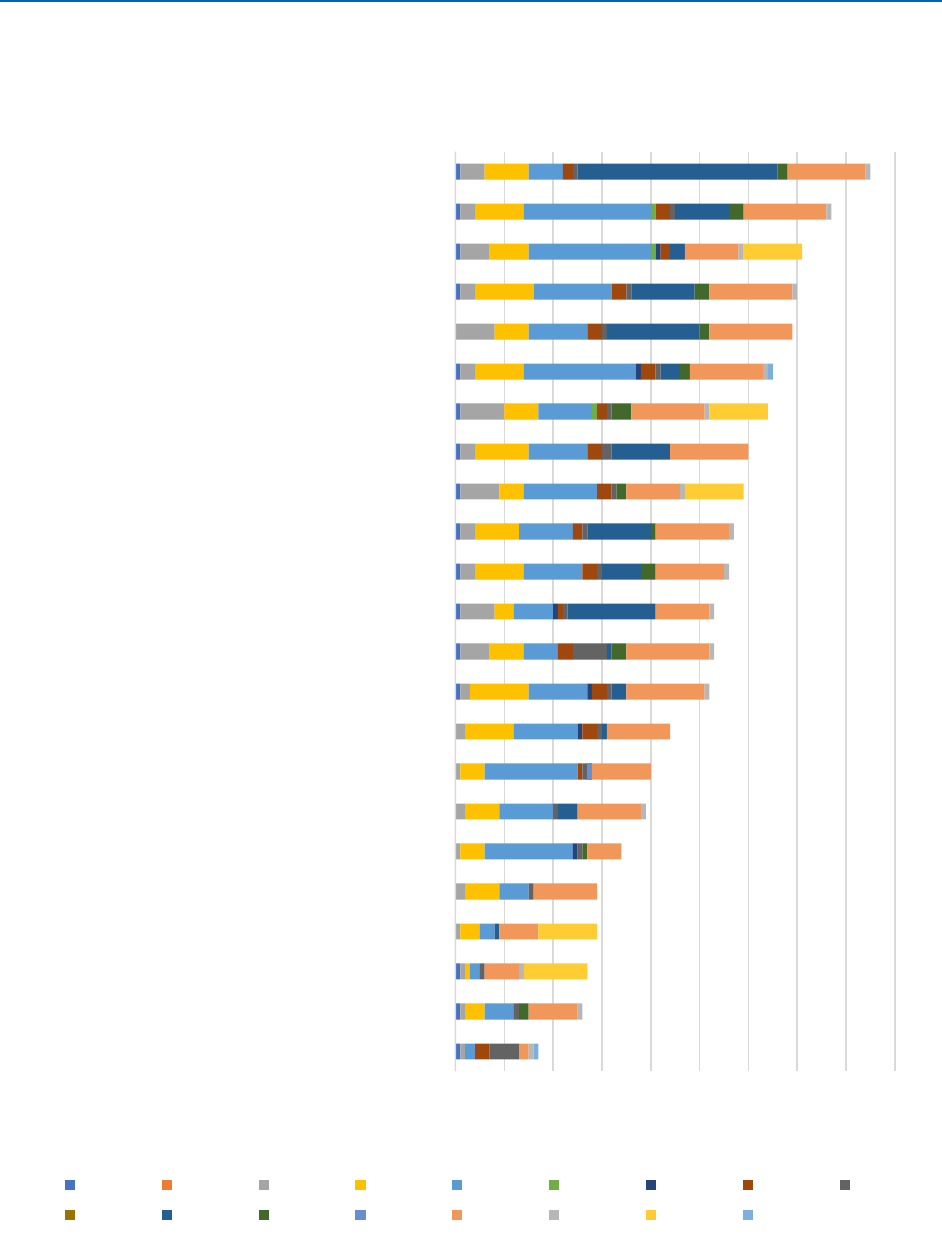
2021 PROGRESS REPORT ON THE IMPLEMENTATION OF THE FEDERAL STEM EDUCATION STRATEGIC PLAN
– 32 –
0 10 20 30 40 50 60 70 80 90
No specific disciplines or areas; general ED
Astronomy
Agricultural sciences
Bioeconomy
Quantum science/Quantum information Science
Advanced Manufacturing
Artificial Intelligence
Material science
Cybersecurity
Information Technology
No specific disciplines or areas; general STEM
Social sciences
Physics
Chemistry
Climate science
Mathematical sciences
Earth, atmospheric, and ocean science
Technology
Data Science
Computer science
Skilled Technical Workforce
Engineering
Biological/Biomedical sciences
Number of Investments Reported
Figure 1. FY2020 Federal Investments by
Disciplinary/Transdisiplinary Area
CNCS DHS DOC DOD DOE DOI DOL DOT ED
EPA HHS NASA NRC NSF SI USDA VA
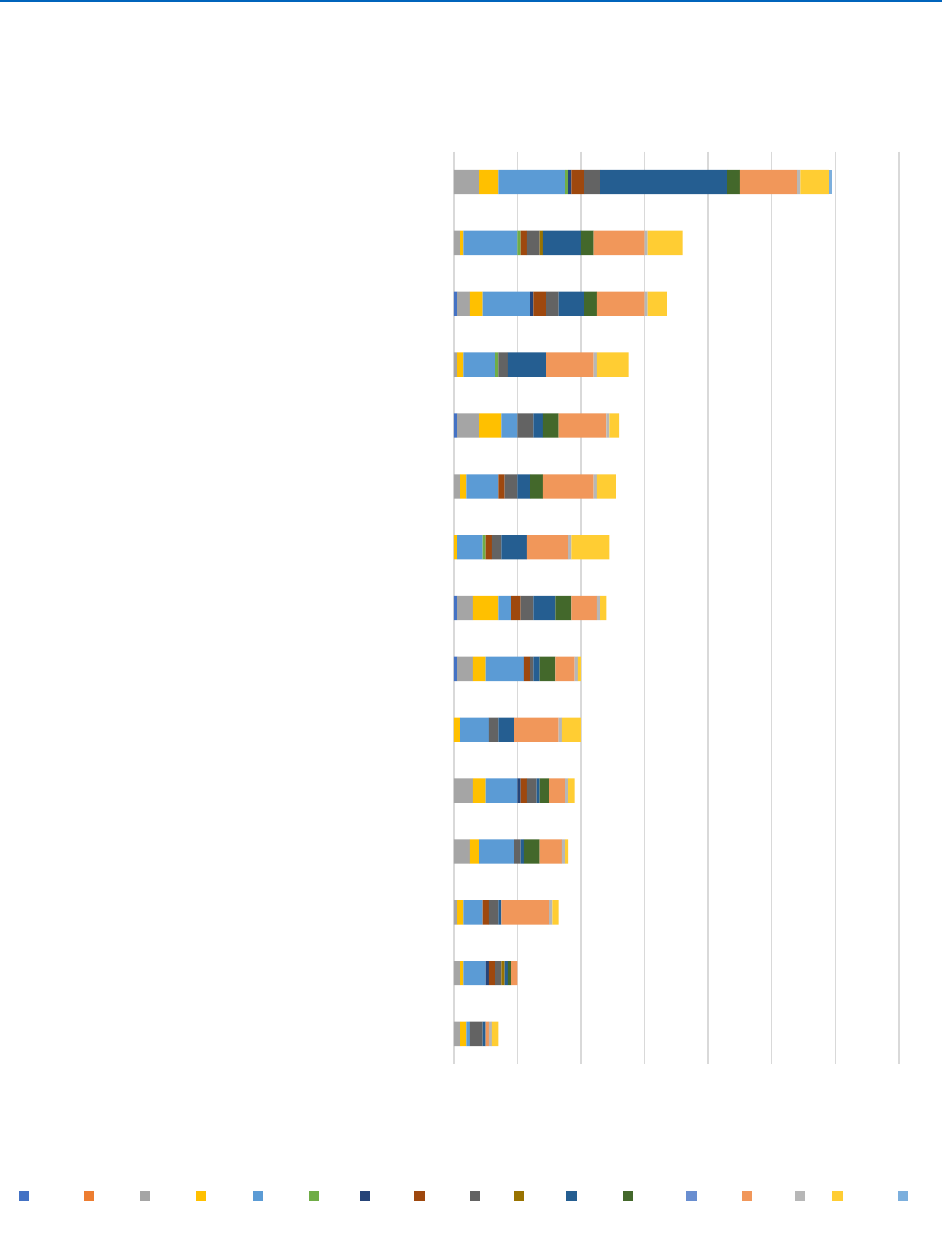
2021 PROGRESS REPORT ON THE IMPLEMENTATION OF THE FEDERAL STEM EDUCATION STRATEGIC PLAN
– 33 –
0 20 40 60 80 100 120 140
Principals, leaders, administrators of PreK-12 schools
Other (please specify)
Education researchers
Informal STEM educators
Leaders, administrators, program developers for organizations
that provide informal STEM learning opportunities
Two-year college/community college mentors
Informal STEM learners
PreK-12 learners
Deans, leaders, administrators of postsecondary institutions
Two-year college/community college instructors
K-12 classroom teachers (including pre-service and in-service
teachers)
Four-year college/university mentors
Two-year college/community college learners
Four-year college/university instructors
Four-year college/university but NOT post-doctoral learners
(e.g., undergraduate, graduate, and post-baccalaureate
learners)
Number of Investments Reported
Figure 2. FY2020 Federal Investments by Audience
Served
CNCS DHS DOC DOD DOE DOI DOL DOT ED EPA HHS NASA NRC NSF SI USDA VA

2021 PROGRESS REPORT ON THE IMPLEMENTATION OF THE FEDERAL STEM EDUCATION STRATEGIC PLAN
– 34 –
Appendix 5. FY 2021-Enacted Inventory of STEM Education Investments
Below is a list of STEM education investments and funding levels provided by OMB’s 2021 data call on
Federal STEM education programs. Programs were included if they had any funding in FY 2020 or FY
2021.
Agency
Sub-
Agency/Office
Program Name
FY 2020
Actual
($, millions)
FY 2021
Estimated
($, millions)
2022
President's
Budget
($, millions)
CNCS
AmeriCorps NCCC
0.2
0.2
0.2
CNCS
AmeriCorps State &
National (Competitive)
66.7
66.7
66.7
CNCS
AmeriCorps State
(Formula)
18.7
18.7
18.7
CNCS
AmeriCorps VISTA
3.6
3.6
3.6
DHS
CWMD
National Nuclear
Forensics Expertise
Development Program
2.6
2.6
3.5
DHS
S&T
Educational Programs -
Minority Serving
Institutions
3.4
5.2
5.2
DOC
EDA
STEM Apprenticeship
Pilot Program
0
4
10
DOC
NIST
NIST Summer Institute
for MIddle School
Teachers
0.1
0.3
0.3
DOC
NIST
STEM Pipeline for the
Next Generation
Scientists and
Engineers.
0.9
1
1
DOC
NIST
Summer Undergraduate
Research Fellowship
(SURF)
0.1
0.8
0.8
DOC
NOAA
Competitive Education
Grants (including
Environmental Literacy
Grants)
2.8
2.7
5
DOC
NOAA
Dr. Nancy Foster
Scholarship Program
0.6
0.6
0.9
DOC
NOAA
Educational Partnership
Program with Minority
Serving Institutions
17.2
20
23
DOC
NOAA
Ernest F. Hollings
Undergraduate
Scholarship Program
5.4
5.4
7
DOC
NOAA
Margaret A. Davidson
Graduate Research
Fellowship
1.6
1.7
1.8

2021 PROGRESS REPORT ON THE IMPLEMENTATION OF THE FEDERAL STEM EDUCATION STRATEGIC PLAN
– 35 –
Agency
Sub-
Agency/Office
Program Name
FY 2020
Actual
($, millions)
FY 2021
Estimated
($, millions)
2022
President's
Budget
($, millions)
DOC
NOAA
National Sea Grant
College Program
1.3
1.5
1.7
DOC
NOAA
NOAA Bay Watershed
Education and Training
(B-WET)
7.8
7.8
7.8
DOC
NOAA
NOAA Teacher at Sea
Program
0.6
0.6
0.6
DOC
NOAA
Office of Ocean
Exploration Education
Programs
1.3
0.8
0.5
DOD
AFRL
Air Force STEM
4.6
4.6
4.7
DOD
DTRA
Joint Science and
Technology Institute
0
0.5
0
DOD
MDA
MDA - Inspiring
Generations with New
Ideas to Transform
Education (IGNITE)
0.5
0.6
0.6
DOD
ODASA(R&T)
Army Educational
Outreach Program
(AEOP)
10.2
10.3
10.6
DOD
ONR
Navy - Science and
Engineering
Apprenticeship
Program (SEAP)
0.1
0.6
0
DOD
ONR
The Naval Research
Enterprise Intern
Program (NREIP)
2.1
4.3
0
DOD
OUSD(R&E)
National Defense
Education Program
(NDEP) K-12 component
46.6
60.1
23.3
DOD
OUSD(R&E)
National Defense
Education Program
(NDEP) Military Child
STEM Educational
Programs
11.5
0
0
DOD
OUSD(R&E)
National Defense
Education Program
(NDEP) Science,
Mathematics And
Research for
Transformation
(SMART)
71
77
88.8

2021 PROGRESS REPORT ON THE IMPLEMENTATION OF THE FEDERAL STEM EDUCATION STRATEGIC PLAN
– 36 –
Agency
Sub-
Agency/Office
Program Name
FY 2020
Actual
($, millions)
FY 2021
Estimated
($, millions)
2022
President's
Budget
($, millions)
DOD
OUSD(R&E)
National Defense
Science and
Engineering Graduate
(NDSEG) Fellowship
Program
45
45
45
DOD
P&R, M&RA
DoD STARBASE
Program1
35
41.2
0
DOE
CESER
CyberForce
Competition
0.6
1.6
1.6
DOE
ED
Minority Educational
Institution Student
Partnership Program
0.7
1.5
1
DOE
EERE
Advanced Vehicle
Competitions
3
2.5
2.5
DOE
EERE
Algae Technology
Education Consortium
0
0.8
1.2
DOE
EERE
Collegiate Wind
Competition
0
0.9
1.2
DOE
EERE
Geothermal Energy
STEM Activities
0
4.5
3
DOE
EERE
Industrial Assessment
Centers
12
12.5
12.5
DOE
EERE
Jump into STEM
0
1
1
DOE
EERE
Solar Decathlon
2
2
2.5
DOE
EERE
Solar District Cup
0
0.7
0.4
DOE
EERE
Water Power STEM
Activities
0
2
3.2
DOE
EERE
Wind for Schools
1
1
0
DOE
EM
HBCU Mathematics,
Science & Technology,
Engineering and
Research Workforce
Development Program
6
0
0
DOE
EM
Minority Serving
Institution Partnership
Program (MSIPP)
0
6
6
DOE
EM
MSI STEM,
Manufacturing and
Cybersecurity
Consortium
0
0
50
DOE
FE
Special Recruitment
Programs/Mickey
Leland Fellowship
0.7
0.7
0.7
DOE
IE
Alaska Resource
Education (ARE) Energy
Education and Outreach
0
0.6
0

2021 PROGRESS REPORT ON THE IMPLEMENTATION OF THE FEDERAL STEM EDUCATION STRATEGIC PLAN
– 37 –
Agency
Sub-
Agency/Office
Program Name
FY 2020
Actual
($, millions)
FY 2021
Estimated
($, millions)
2022
President's
Budget
($, millions)
DOE
NE
Integrated University
Program
5
5
6
DOE
NNSA
Center of Excellence for
Materials Degradation
and Life Extension
0
6
0
DOE
NNSA
Computational Sciences
Graduate Fellowship
(CSGF)
2
2
2
DOE
NNSA
Joint Program in High
Energy Density
Laboratory Plasmas
8.5
8.7
8.9
DOE
NNSA
Minority Serving
Institution Partnership
Program (MSIPP)
25
35
35
DOE
NNSA
MSI Pit Production
Workforce Development
Partnership
0
7
10
DOE
NNSA
Nuclear
Nonproliferation
International
Safeguards Graduate
Fellowship Program
0.5
0.7
0.8
DOE
NNSA
Predictive Science
Academic Alliance
Program
20
20
20.5
DOE
NNSA
Rickover Fellowship
Program in Nuclear
Engineering
1
1.2
1.4
DOE
NNSA
Savannah River Site
Community Reuse
Organization Workforce
Opportunities in
Regional Careers
Program
1.4
1.4
1.2
DOE
NNSA
Stewardship Science
Academic Alliances
(SSAA) Grants and
Cooperative
Agreements
26
26.2
24.3
DOE
NNSA
Tribal Education
Partnership Program
(TEPP)
5
5
5
DOE
SC
American Chemical
Society Summer School
in Nuclear and
Radiochemistry
0.6
0.6
0.7

2021 PROGRESS REPORT ON THE IMPLEMENTATION OF THE FEDERAL STEM EDUCATION STRATEGIC PLAN
– 38 –
Agency
Sub-
Agency/Office
Program Name
FY 2020
Actual
($, millions)
FY 2021
Estimated
($, millions)
2022
President's
Budget
($, millions)
DOE
SC
Community College
Internship (formerly
Community College
Institute of Science and
Technology)
1.7
1.9
2
DOE
SC
Computational Sciences
Graduate Fellowship
10
10
15
DOE
SC
Graduate Student
Research Program
4.5
4.6
5
DOE
SC
Isotopes (IP)
Traineeship
0
1
0
DOE
SC
National Science Bowl
2.9
2.9
2.9
DOE
SC
Reaching a New Energy
Sciences Workforce
(RENEW)
0
0
30
DOE
SC
Science Undergraduate
Laboratory Internships
13.6
13.8
14
DOE
SC
U.S. Particle Accelerator
Training
1
0.8
1
DOE
SC
Visiting Faculty Program
(formerly Faculty and
Student Teams)
2
1.8
2.1
DOI
USGS
EDMAP
0.5
0.9
1
DOL
ETA
H-1B Training Activities
40.4
76.5
60
DOT
FAA
Air Transportation
Centers of Excellence
66.9
70.3
57.6
DOT
FHWA
Dwight David
Eisenhower
Transportation
Fellowship Program
2.1
2
2
DOT
FHWA
Garrett A. Morgan
Technology and
Transportation
Education Program
0
0.4
0.4
DOT
FHWA
National Summer
Transportation Institute
Program (NSTI)
2.7
2.7
2.7
DOT
FHWA
Summer Transportation
Institute Program for
Diverse Groups
(STIPDG)
0.9
1.4
1.5
DOT
FHWA
University
Transportation Centers
Program
70.2
68.9
77.5

2021 PROGRESS REPORT ON THE IMPLEMENTATION OF THE FEDERAL STEM EDUCATION STRATEGIC PLAN
– 39 –
Agency
Sub-
Agency/Office
Program Name
FY 2020
Actual
($, millions)
FY 2021
Estimated
($, millions)
2022
President's
Budget
($, millions)
DOT
FRA
Encouraging Early
Interest in Railroad
Careers
0
0
0.3
DOT
FRA
Making Railroading a
Career of Choice
0
0.4
0.4
DOT
FRA
Partnerships with
Associations and
Industry
0
0
0.4
ED
IES
Institute of Education
Sciences - American
Rescue Plan
0
0
5
ED
IES
Regional Educational
Laboratories
3.1
1.7
1.3
ED
IES
Research in Special
Education
13.8
18.1
14.7
ED
IES
Research, Development,
and Dissemination
39.4
45.7
65.3
ED
OESE
21st Century
Community Learning
Centers
0
0
0
ED
OESE
Investing in Innovation
65
67
0
ED
OPE
Developing Hispanic
Serving Institutions
STEM and articulation
programs
94.1
94.3
290.3
ED
OPE
Graduate Assistance in
Areas of National Need
(GAANN)
23.1
23.5
23.5
ED
OPE
Minority Science and
Engineering
Improvement Program
12.6
13.4
18.4
ED
OPE
Strengthening
Predominantly Black
Institutions
8.2
7.5
20
ED
OPE
Teacher Loan
Forgiveness
100
105
108
ED
OPE
Upward Bound Math
and Science Program
64.5
65.9
94.6
EPA
EE
Environmental
Education Grants
3.3
3.3
3.3
EPA
EE
National Environmental
Education and Training
Partnership
2.1
2.1
2.1

2021 PROGRESS REPORT ON THE IMPLEMENTATION OF THE FEDERAL STEM EDUCATION STRATEGIC PLAN
– 40 –
Agency
Sub-
Agency/Office
Program Name
FY 2020
Actual
($, millions)
FY 2021
Estimated
($, millions)
2022
President's
Budget
($, millions)
EPA
ORD
P3-People, Prosperity &
the Planet-Award: A
National Student Design
Competition for
Sustainability
0.7
0.8
0.8
HHS
HRSA
Health Careers
Opportunity Program
15
18.5
18.5
HHS
NIH
AD/ADRD Clinical Trials
Short Course
0
0
1.8
HHS
NIH
Aging Research
Dissertation Awards to
Increase Diversity
0.7
0.8
0.8
HHS
NIH
Blueprint Program for
Enhancing
Neuroscience Diversity
through Undergraduate
Research Education
Experiences
2.4
3.8
4
HHS
NIH
Bridges to the
Baccalaureate Program
10.1
8.8
9.9
HHS
NIH
Bridges to the
Doctorate
2.1
1.5
1.4
HHS
NIH
Cancer Education
Grants Program
14.9
20.9
21.4
HHS
NIH
Cancer Research
Training Award (CRTA)
Program
6.6
7.5
7.9
HHS
NIH
Center for Cancer
Research Cancer/John
Hopkins University
Master of Science in
Biotechnology
Concentration in
Molecular Targets and
Drug Discovery
Technologies
0.4
0.4
0.4
HHS
NIH
Drug Abuse Dissertation
Research
0.5
0.5
0.3
HHS
NIH
Enhancing Science,
Technology,
Engineering, and Math
Educational Diversity
(ESTEEMED) Research
Education Experiences
(R25)
1.5
0.8
0.8

2021 PROGRESS REPORT ON THE IMPLEMENTATION OF THE FEDERAL STEM EDUCATION STRATEGIC PLAN
– 41 –
Agency
Sub-
Agency/Office
Program Name
FY 2020
Actual
($, millions)
FY 2021
Estimated
($, millions)
2022
President's
Budget
($, millions)
HHS
NIH
Fogarty Global Health
Training Program (US
predoc component)
1.3
1
1
HHS
NIH
Graduate Program
Partnerships
12.1
12.4
12.7
HHS
NIH
Health Careers
Opportunity Program
0.8
0.9
0.2
HHS
NIH
Initiative for Maximizing
Research Education in
Genomics; Diversity
Action Plan
3.1
3.4
2.9
HHS
NIH
Initiative for Maximizing
Student Development
16.8
13.6
8.6
HHS
NIH
MARC U-STAR NRSA
Program
18
17.1
18.9
HHS
NIH
Mathematics and
Science Cognition and
Learning (MSCL)
Program
9.2
9.4
10
HHS
NIH
National Institute of
Diabetes and Digestive
and Kidney Diseases
Research, Education
Program Grants for
Summer Research
Experiences (R25)
3.1
3
3.2
HHS
NIH
National Institute of
Neurological Disorders
and Stroke
Neuroscience
Development for
Advancing the Careers
of a Diverse Research
Workforce
3.8
3.5
4
HHS
NIH
National Institute on
Aging Medicine,
Science, Technology,
Engineering and
Mathematics:
Advancing Diversity in
Aging Research (ADAR)
through Undergraduate
Education
4.5
6.5
8.3

2021 PROGRESS REPORT ON THE IMPLEMENTATION OF THE FEDERAL STEM EDUCATION STRATEGIC PLAN
– 42 –
Agency
Sub-
Agency/Office
Program Name
FY 2020
Actual
($, millions)
FY 2021
Estimated
($, millions)
2022
President's
Budget
($, millions)
HHS
NIH
National Library of
Medicine Institutional
Training Grants for
Research Training in
Biomedical Informatics
and Data Science
11.8
11.5
12
HHS
NIH
NCI Predoctoral to
Postdoctoral Fellow
Transition Award (F99
Portion Only)
2
1.9
1.8
HHS
NIH
NIA Research and
Entrepreneurial
Development
Immersion (REDI):
Entrepreneurship
Enhancement Award
0
0
0.8
HHS
NIH
NIDA Research
Education Program for
Clinical Researchers
and Clinicians
5.2
5.2
5.8
HHS
NIH
NIH Big Data to
Knowledge (BD2K)
Enhancing Diversity in
Biomedical Data
Science
0.3
0.3
0.3
HHS
NIH
NIH Building
Infrastructure Leading
to Diversity (BUILD)
Initiative (RL5 portion
only)
8.9
7
5.9
HHS
NIH
NIH Building
Infrastructure Leading
to Diversity (BUILD)
Initiative (TL4 portion
only)
10.2
8
6.8
HHS
NIH
NIMHD Minority Health
and Health Disparities
International Research
Training (T37)
3.3
3.2
3.5
HHS
NIH
Office of Intramural
Training and Education
(OITE)
0.3
0.3
0.3
HHS
NIH
Oxford-Cambridge
Scholars Program
(Ox/Cam)
0.2
0.3
0.3
HHS
NIH
P30 CURE Supplement
1
0
0

2021 PROGRESS REPORT ON THE IMPLEMENTATION OF THE FEDERAL STEM EDUCATION STRATEGIC PLAN
– 43 –
Agency
Sub-
Agency/Office
Program Name
FY 2020
Actual
($, millions)
FY 2021
Estimated
($, millions)
2022
President's
Budget
($, millions)
HHS
NIH
Post-baccalaureate
Intramural Research
Training Award
Program
52.3
53.3
54.4
HHS
NIH
Postbaccalaureate
Research Education
Program (PREP)
12.7
13.6
14.1
HHS
NIH
Programs to Increase
Diversity Among
Individuals Engaged in
Health-Related
Research (PRIDE)
4.2
4.2
4.2
HHS
NIH
Providing Research
Education Experiences
to Enhance Diversity in
the Next Generation of
Substance Abuse and
Addiction Scientists
2.4
2.4
2.4
HHS
NIH
Research Supplements
to Promote Diversity in
Health-Related
Research
56
56
56
HHS
NIH
RISE (Research Initiative
for Scientific
Enhancement)
25.9
23.1
26.6
HHS
NIH
Ruth L. Kirschstein
National Research
Service Award
Institutional Research
Training Grants (T32,
T35)
313.4
328.2
352
HHS
NIH
Ruth L. Kirschstein
NRSA for Individual
Predoctoral Fellows,
including
Underrepresented
Racial/Ethnic Groups,
Students from
Disadvantaged
Backgrounds, and
Predoctoral Students
with Disabilities
110.9
117.1
124.6
HHS
NIH
Science Education
Partnership Award
21.1
22.2
23

2021 PROGRESS REPORT ON THE IMPLEMENTATION OF THE FEDERAL STEM EDUCATION STRATEGIC PLAN
– 44 –
Agency
Sub-
Agency/Office
Program Name
FY 2020
Actual
($, millions)
FY 2021
Estimated
($, millions)
2022
President's
Budget
($, millions)
HHS
NIH
Short Courses on
Interdisciplinary
Behavioral and Social
Sciences Research on
Aging
0
0
0.5
HHS
NIH
Short Courses on
Interdisciplinary
Behavioral and Social
Sciences Research on
Alzheimer's Disease and
Related Dementias
0
0
0.5
HHS
NIH
Short Courses on
Mathematical,
Statistical, and
Computational Tools
for Studying Biological
Systems
0.1
0.1
0.1
HHS
NIH
Short-Term Research
Education Program to
Increase Diversity in
Health-Related
Research
5.5
5.3
5.5
HHS
NIH
Short-Term Research
Experience for
Underrepresented
Persons (STEP-UP; R25)
1.57
1.57
2.25
HHS
NIH
Strengthening
Institutional Capacity to
Conduct Global Cancer
Research NCI D43
0
1.9
1.9
HHS
NIH
Student Intramural
Research Training
Award Program
0
5.5
5.7
HHS
NIH
Summer Institute for
Training in Biostatistics
1.5
1.5
1.5
HHS
NIH
Summer Research
Education Experience
Programs
5.7
7.9
9.1
HHS
NIH
UMD-NCI Partnership
for Integrative Cancer
Research
0.8
0.8
0.9

2021 PROGRESS REPORT ON THE IMPLEMENTATION OF THE FEDERAL STEM EDUCATION STRATEGIC PLAN
– 45 –
Agency
Sub-
Agency/Office
Program Name
FY 2020
Actual
($, millions)
FY 2021
Estimated
($, millions)
2022
President's
Budget
($, millions)
HHS
NIH
Undergraduate
Research Education
Program (UP) to
Enhance Diversity in
Environmental Health
Sciences
1
1
1
HHS
NIH
Undergraduate
Scholarship Program for
Individuals from
Disadvantaged
Backgrounds
4.3
4.3
0.1
HHS
NIH
Werner H Kirsten
Student Internship
Program
0
0.2
0.5
NASA
Office of STEM
Engagement
MUREP
36
38
48
NASA
Office of STEM
Engagement
NextGen STEM Project
(NGS)
12
12
16
NASA
Office of STEM
Engagement
Space Grant - National
Space Grant College
and Fellowship Program
48
51
57
NASA
SMD
GLOBE Program
6
6.9
6.9
NASA
SMD
SMD Robotics Alliance
Program
4
4
4
NASA
SMD
SMD Science Activation
Program
45.6
45.6
55.6
NRC
RES
Integrated University
Program
2.5
18.4
0
NRC
SBCR
Minority Serving
Institutions Program
(MSIP)
0
NSF
CISE
CyberTraining
5
6
6
NSF
CISE, EHR, MPS
Harnessing the Data
Revolution (HDR): Data
Science Corps (DSC)
3
6
3
NSF
EHR
Advanced
Technological
Education (ATE)
73.5
75
75
NSF
EHR
Advancing Informal
STEM Learning (AISL),
formerly Informal
Science Education (ISE)
62.5
62.5
70

2021 PROGRESS REPORT ON THE IMPLEMENTATION OF THE FEDERAL STEM EDUCATION STRATEGIC PLAN
– 46 –
Agency
Sub-
Agency/Office
Program Name
FY 2020
Actual
($, millions)
FY 2021
Estimated
($, millions)
2022
President's
Budget
($, millions)
NSF
EHR
Alliances for Graduate
Education and the
Professoriate (AGEP)
8
8
8
NSF
EHR
Cybercorps: Scholarship
for Service (SFS)
55
60
70
NSF
EHR
Discovery Research K-12
(DR-K12)
95
95
95
NSF
EHR
Excellence Awards in
Science and
Engineering (EASE)
7.3
5
7.7
NSF
EHR
Graduate Research
Fellowship Program
(GRFP)
284.5
284.5
318.5
NSF
EHR
Hispanic-Serving
Institutions
45
46.5
56.5
NSF
EHR
Historically Black
Colleges and
Universities
Undergraduate
Program (HBCU-UP)
35
36.5
46.5
NSF
EHR
Improving
Undergraduate STEM
Education
109.5
111.5
108.6
NSF
EHR
Innovative Technology
Experiences for
Students and Teachers
(ITEST)
34.9
44.3
40.7
NSF
EHR
Louis Stokes Alliances
for Minority
Participation (LSAMP)
47.5
49.5
69.5
NSF
EHR
NSF Inclusion across the
Nation of Communities
of Learners of
Underrepresented
Discoverers in
Engineering and
Science (INCLUDES)
20.8
20
46.5
NSF
EHR
NSF Research
Traineeships (NRT)
49.6
58
58
NSF
EHR
NSF Scholarships in
Science, Technology,
Engineering, and
Mathematics (S-STEM)
79.9
132.8
121.9
NSF
EHR
Research Experiences
for Undergraduates
(REU)
98.6
82.3
84.5

2021 PROGRESS REPORT ON THE IMPLEMENTATION OF THE FEDERAL STEM EDUCATION STRATEGIC PLAN
– 47 –
Agency
Sub-
Agency/Office
Program Name
FY 2020
Actual
($, millions)
FY 2021
Estimated
($, millions)
2022
President's
Budget
($, millions)
NSF
EHR
Robert Noyce
Scholarship (Noyce)
Program
69.8
67
67
NSF
EHR
Tribal Colleges and
Universities Program
(TCUP)
15
16.5
21
NSF
EHR, CISE
Computer Science for
All (CSforAll)
30.5
24.5
24.5
NSF
ENG
Emerging Frontiers in
Research and
Innovation (EFRI)
Research Experience
and Mentoring (REM)
0.5
0.8
1
NSF
ENG, CISE
Research Experiences
for Teachers (RET) in
Engineering and
Computer Science
8.2
6.3
7.2
NSF
OISE
International Research
Experiences for
Students (IRES)
11.8
12.3
12
SI
STEM Informal
Education and
Instruction
5.2
5.7
6.1
USDA
APHIS
AgDiscovery
0.3
0.5
1
USDA
APHIS
Historically Black
Colleges/Universities
Vet Tech Programs
0.6
0.7
0.7
USDA
NIFA
1890 Facilities Grant
Program
20.5
21.5
21.5
USDA
NIFA
1890 Institutions
Capacity Building
Grants Program:
Extension
7.7
8.7
8.7
USDA
NIFA
1890 Institutions
Capacity Building
Grants Program:
Teaching
7.7
8.7
8.7
USDA
OPPE
1890 National Scholars
Program
5
10
10
USDA
NIFA
4-H Science, 4-H Youth
Development Program
26.6
26.6
26.6
USDA
NIFA
Agriculture in the
Classroom
0.6
0.6
1

2021 PROGRESS REPORT ON THE IMPLEMENTATION OF THE FEDERAL STEM EDUCATION STRATEGIC PLAN
– 48 –
Agency
Sub-
Agency/Office
Program Name
FY 2020
Actual
($, millions)
FY 2021
Estimated
($, millions)
2022
President's
Budget
($, millions)
USDA
NIFA
Alaska Native-Serving
and Native Hawaiian-
Serving Institutions
Education Competitive
Grants Program
3.2
3.2
3.2
USDA
NIFA
Hispanic_serving
Institutions Education
Grants Program
11.2
12.5
12.5
USDA
NIFA
Insular Programs
2
2
2
USDA
NIFA
Multicultural Scholars,
Graduate Fellowship
and Institution
Challenge Grants
9
9.5
9.5
USDA
NIFA
NIFA Fellowship Grants
Program
32
58
70
USDA
NIFA
Secondary
Postsecondary
Agriculture Education
Challenge Grants
(SPECA)
0.9
0.9
0.9
USDA
NIFA
Women and Minorities
in Science, Technology,
Engineering and
Mathematics Fields
Program (WAMS)
0.4
0.4
1
VA
Edith Nourse Rogers
STEM Scholarship
18.4
131.6
75
VA
Veteran Employment
Through Technology
Education Courses (VET
TEC)
26.5
47.1
45
FY 2021 STEM Education Investments Adjustments
Outside of the new programs that were initiated in FY2021, only one investment was terminated as its
funding authority expired (National Defense Education Program (NDEP) Military Child STEM
Educational Programs). Otherwise, changes from FY2020 to FY2021 investments included: Programs
pivoting from in-person to virtual, changes in program offerings warranting inclusion or exclusion
from the CoSTEM inventory, and/or changes in the amount of funds toward STEM-specific activities
warranting inclusion or exclusion from the CoSTEM inventory.
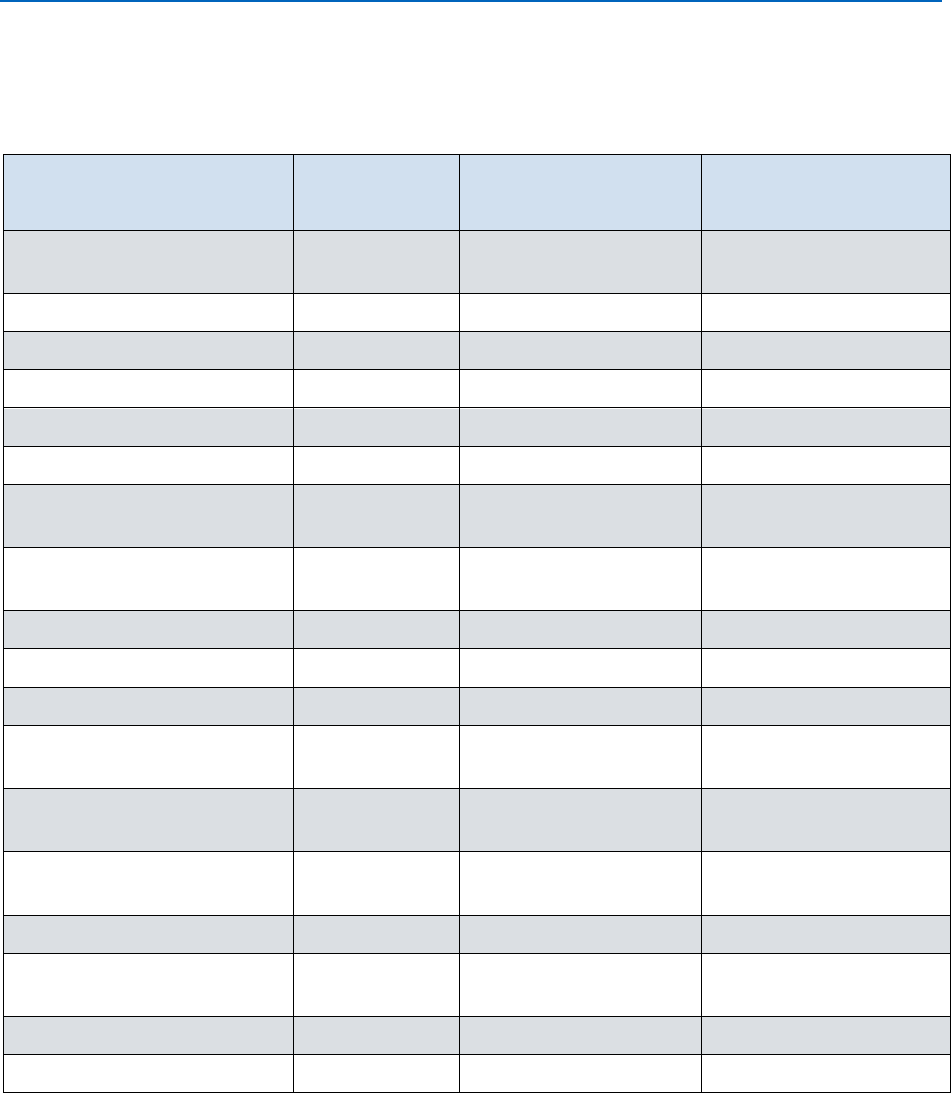
2021 PROGRESS REPORT ON THE IMPLEMENTATION OF THE FEDERAL STEM EDUCATION STRATEGIC PLAN
– 49 –
Appendix 6: Summary of STEM Education Investments
This table provides a summary of all inventory data from Appendix 5 by agency.
Agency
FY20 Actual
($, millions)
FY21 Estimated Budget
($, millions)
2022 President's Budget
($, millions)
Corporation for National and
Community Service
89.2
89.2
89.2
Department of Agriculture
127.7
163.8
177.3
Department of Commerce
39.7
47.2
60.4
Department of Defense
226.6
244.2
173.0
Department of Education
423.8
442.1
641.1
Department of Energy
156.7
193.9
274.6
Department of Health and
Human Services
789.5
822.2
861.4
Department of Homeland
Security
6
7.8
8.7
Department of Labor
40.4
76.5
60
Department of the Interior
0.5
0.9
1.0
Department of Transportation
142.8
146.1
142.8
Department of Veterans
Affairs
44.9
178.7
120
Environmental Protection
Agency
6.1
6.2
6.2
National Aeronautics and
Space Administration
151.6
157.5
187.5
National Science Foundation
1250.4
1310.8
1418.6
Nuclear Regulatory
Commission
2.5
18.4
0
Smithsonian Institution
5.2
5.7
6.1
Grand Total
3503.6
3911.2
4227.9
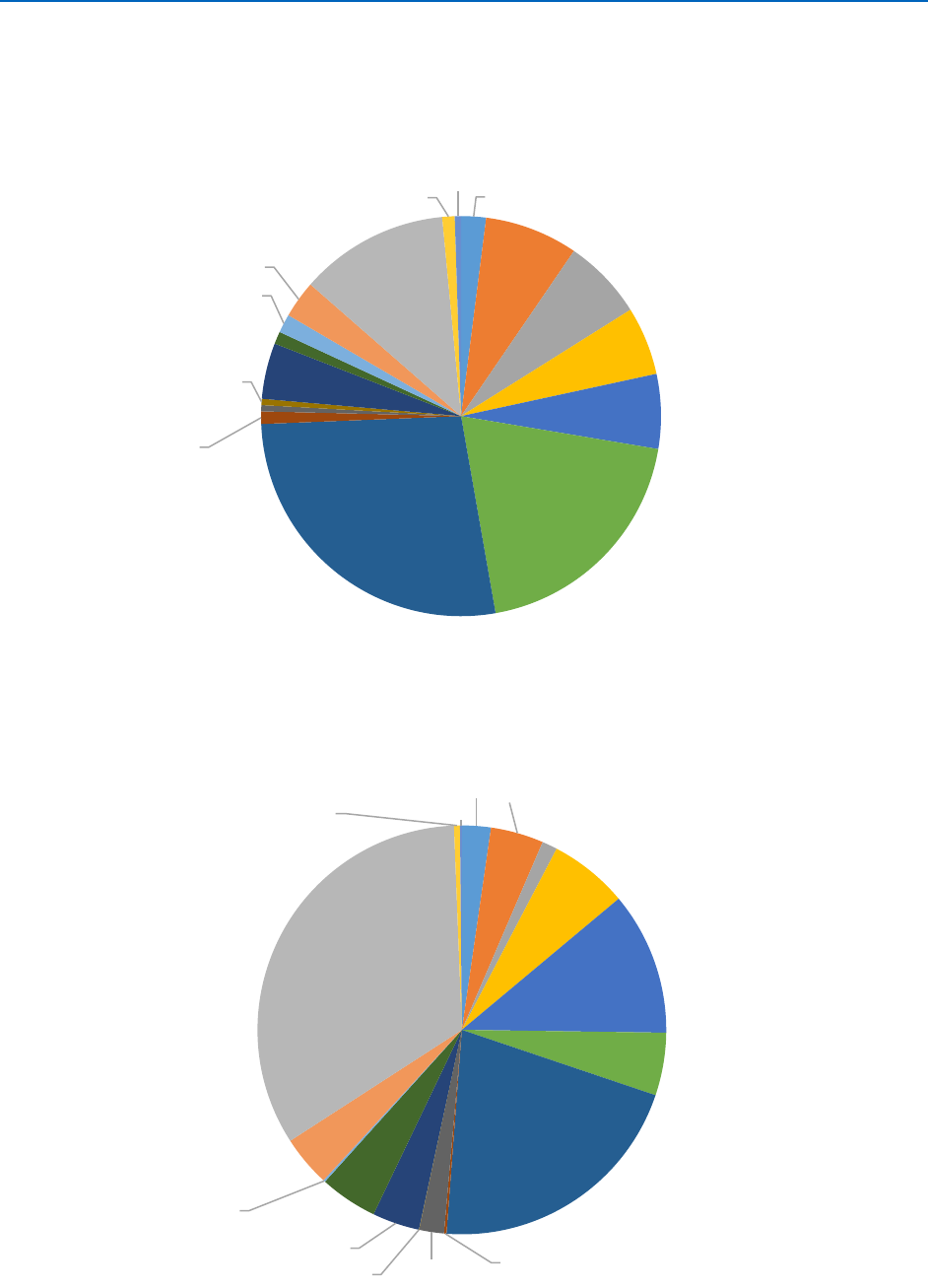
2021 PROGRESS REPORT ON THE IMPLEMENTATION OF THE FEDERAL STEM EDUCATION STRATEGIC PLAN
– 50 –
Figure 3. This pie chart depicts the number of investments by agency for FY 2021 based on the
inventory in Appendix 5.
Figure 4. This pie chart depicts the information provided in the table above in the FY2021 Estimated
Budget column.
CNCS, 4
USDA, 15
DOC, 13
DOD, 11
ED, 12
DOE, 39
HHS, 54
DHS, 2
DOL, 1
DOI, 1
DOT, 9
VA, 2
EPA, 3
NASA, 6
NSF, 24
NRC, 2
SI, 1
FY 2021 Number of STEM Education Investments by Agency
CNCS, 89.2
USDA, 163.8
DOC, 47.2
DOD,
244.2
ED, 442.1
DOE, 193.9
HHS, 822.2
DHS, 7.8
DOL, 76.5
DOI, 0.9
DOT, 146.1
VA, 178.7
EPA, 6.2
NASA, 157.5
NSF, 1310.8
NRC, 18.4
SI, 5.7
FY 2021 Estimated Budget ($, millions)
